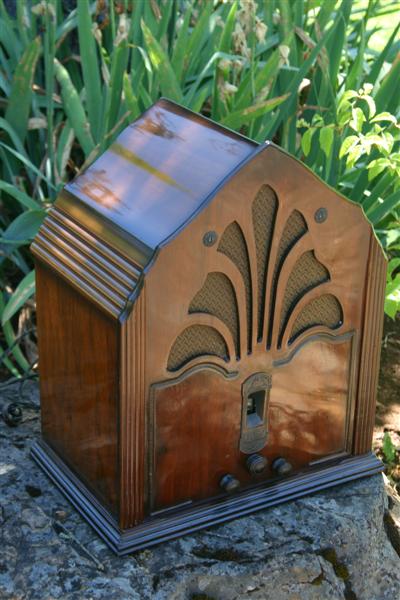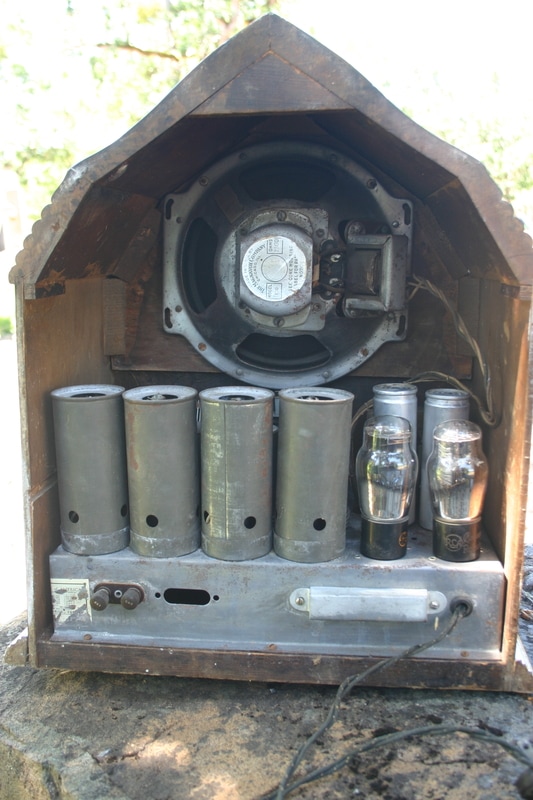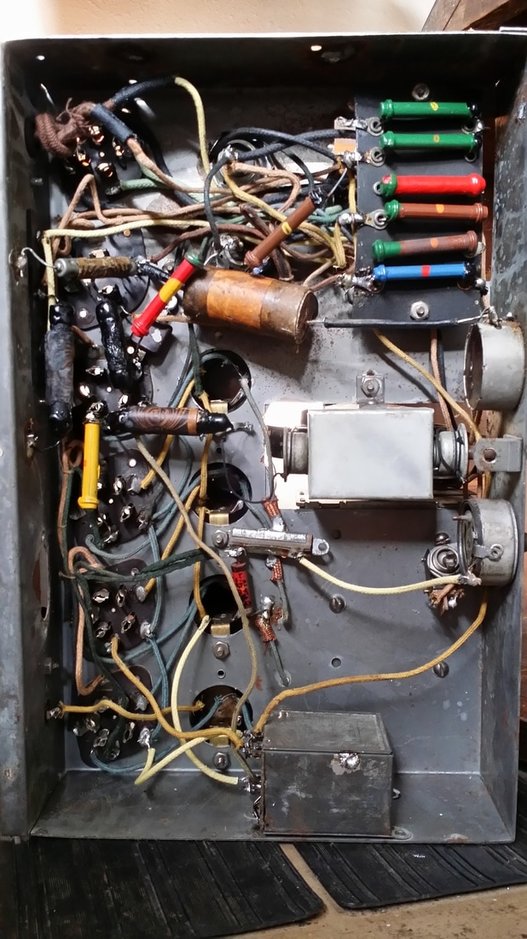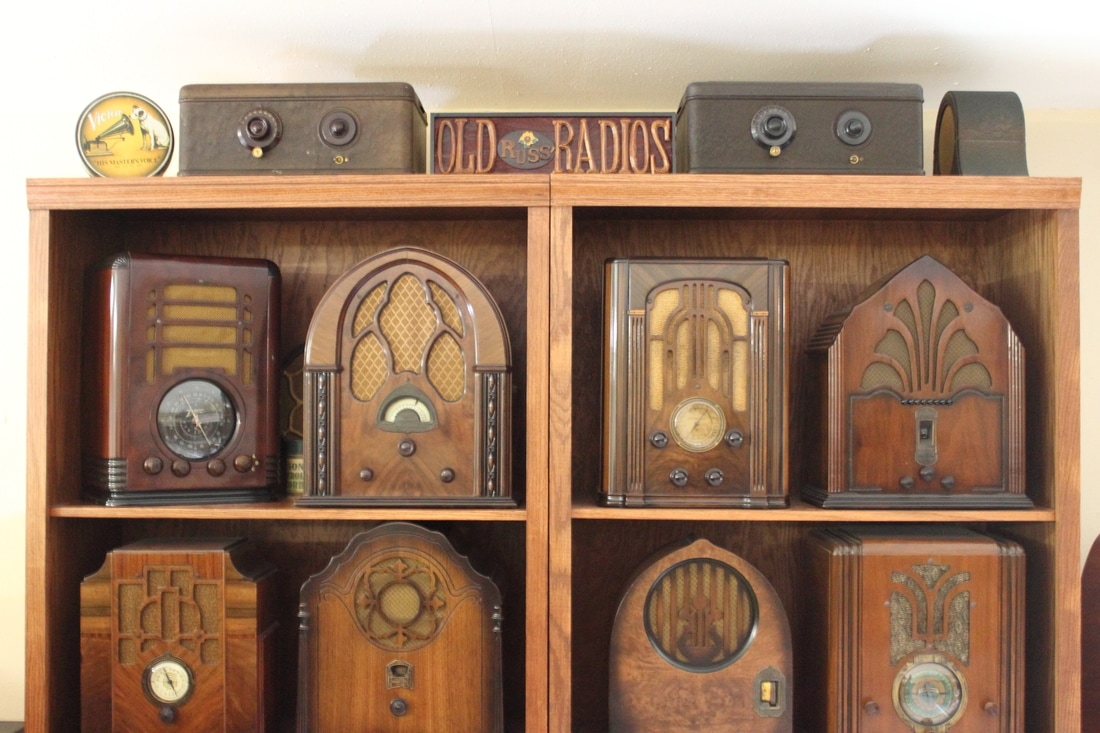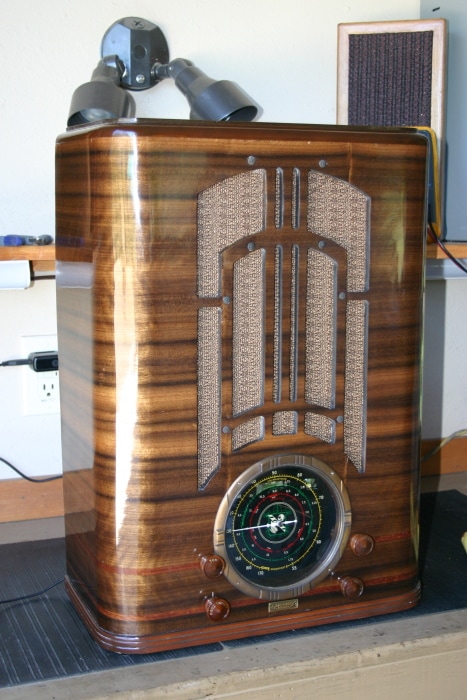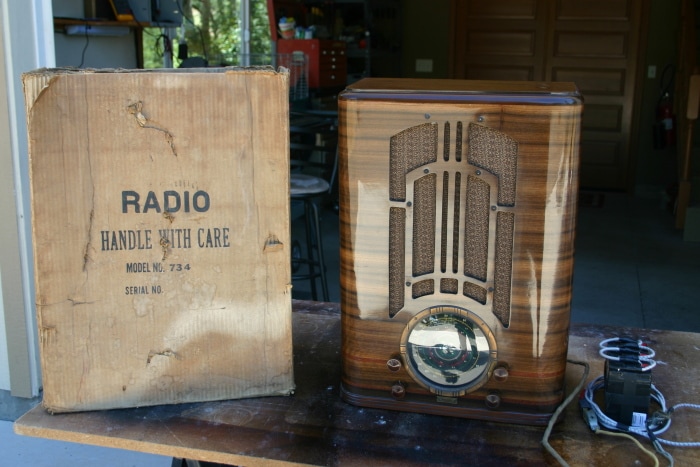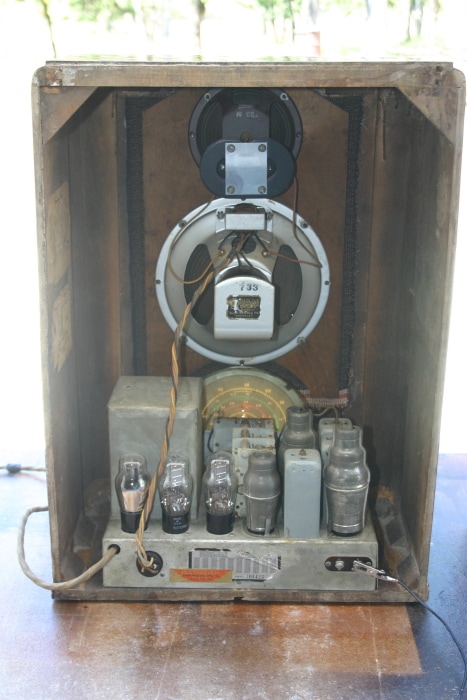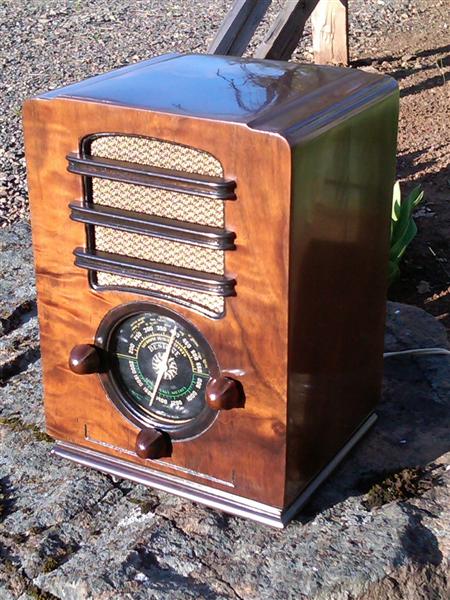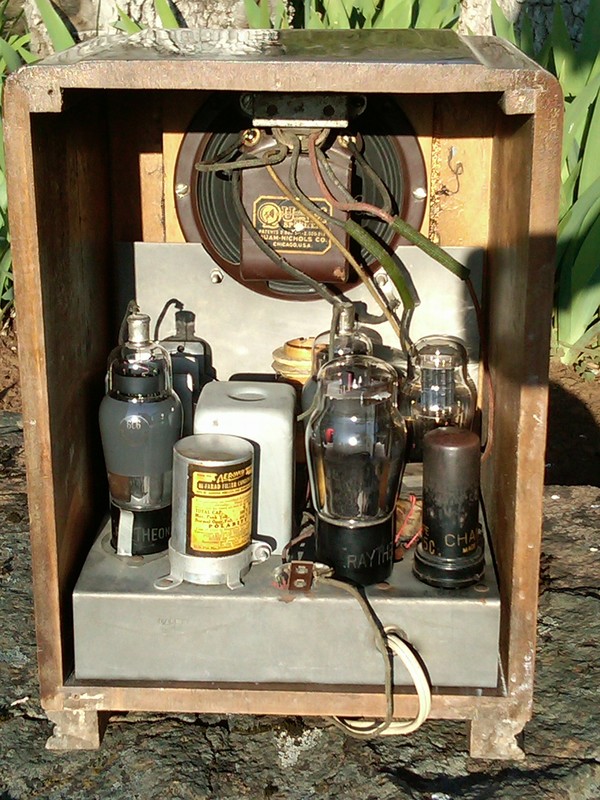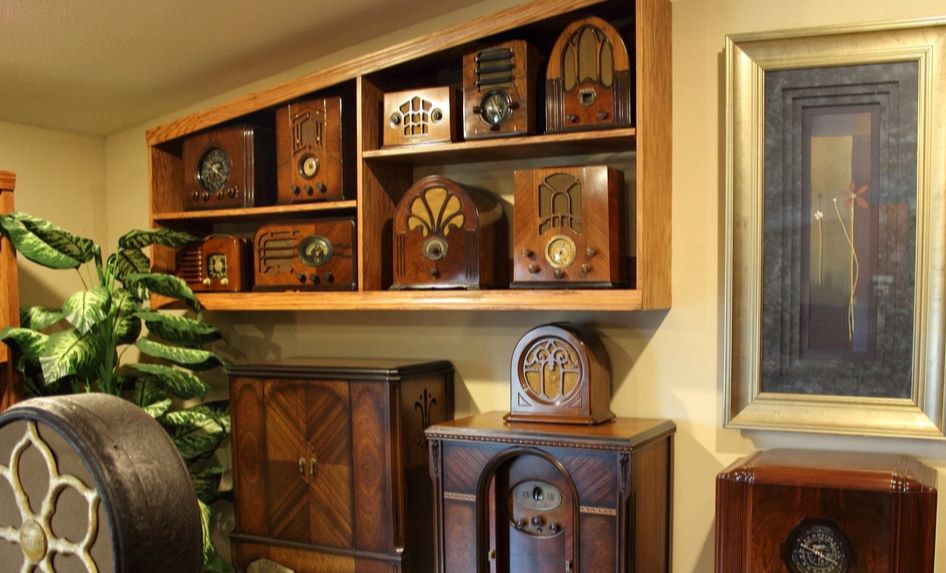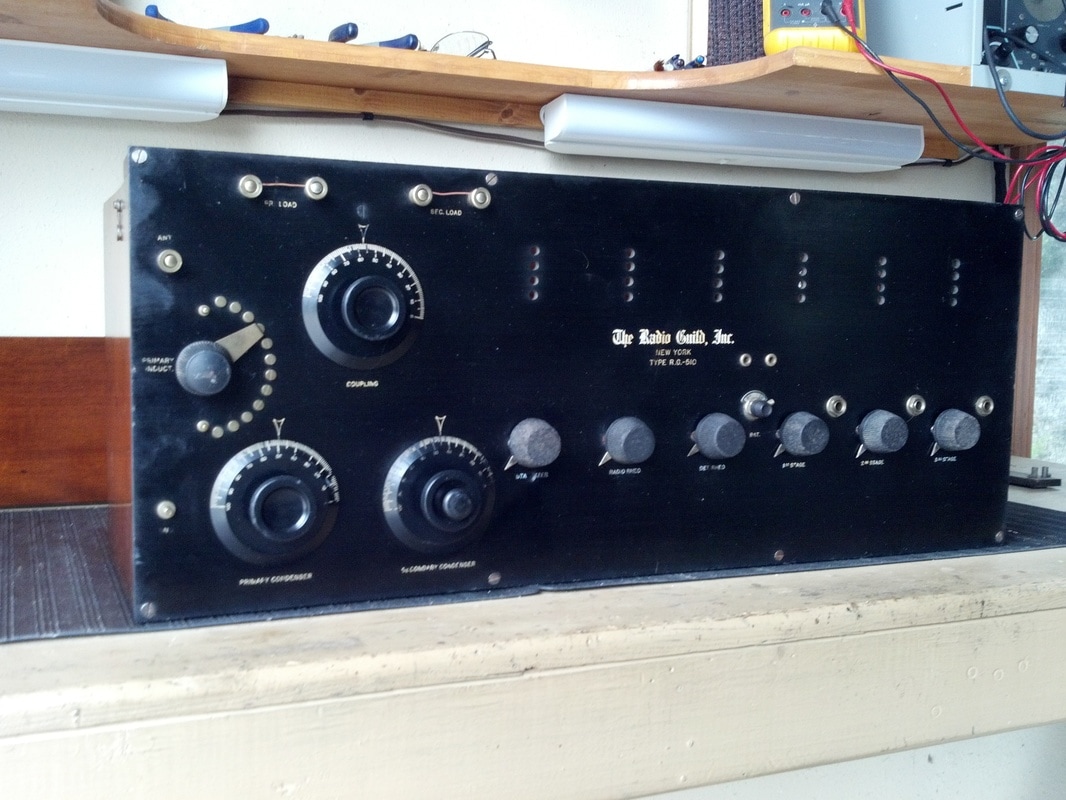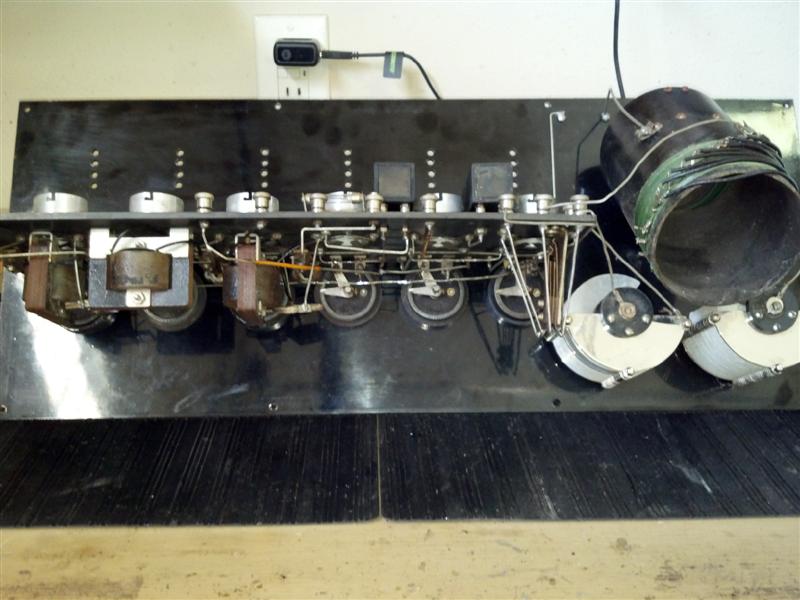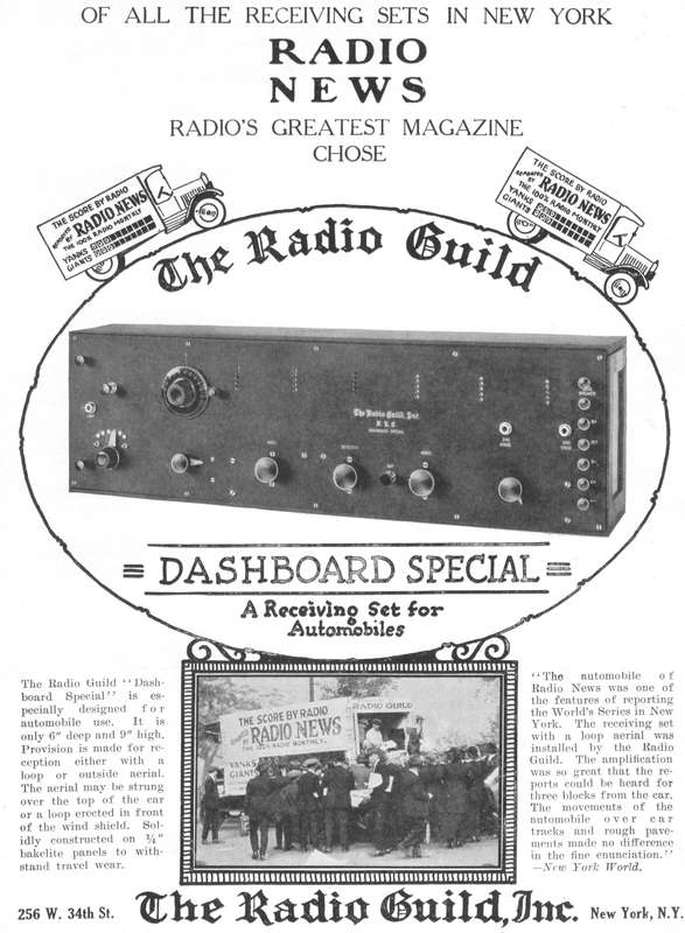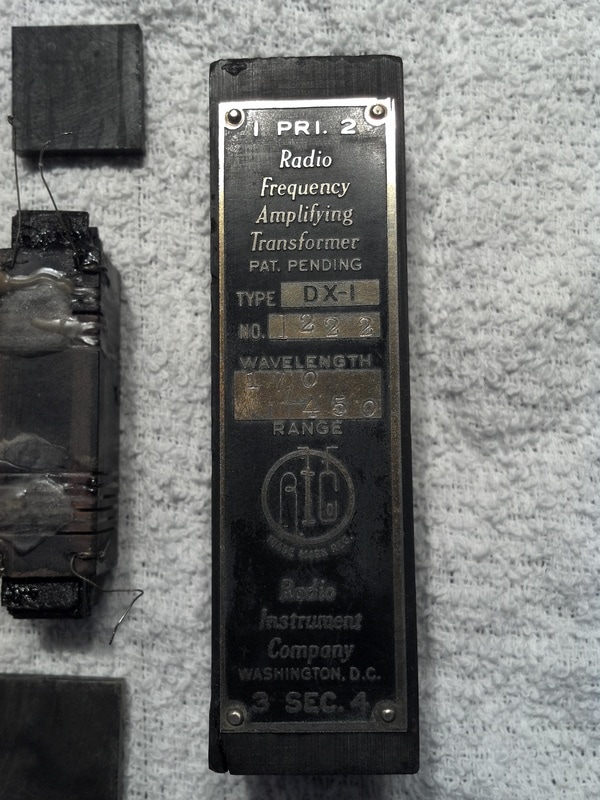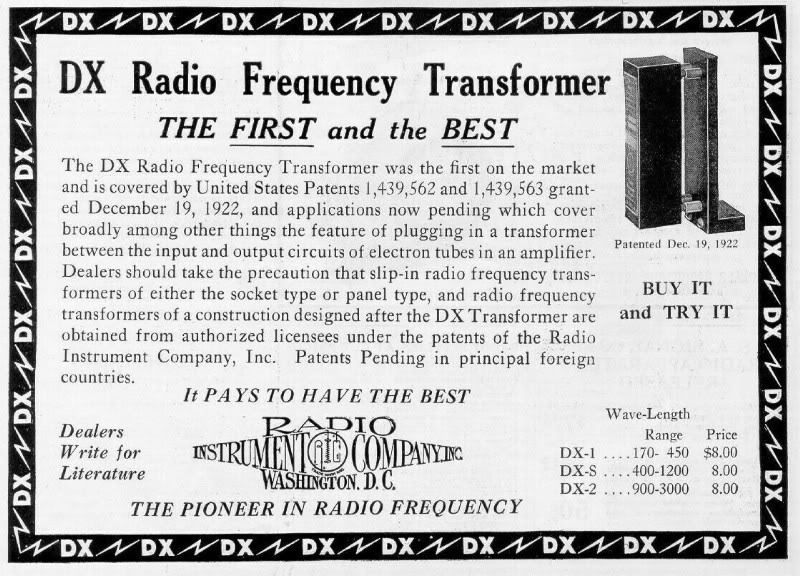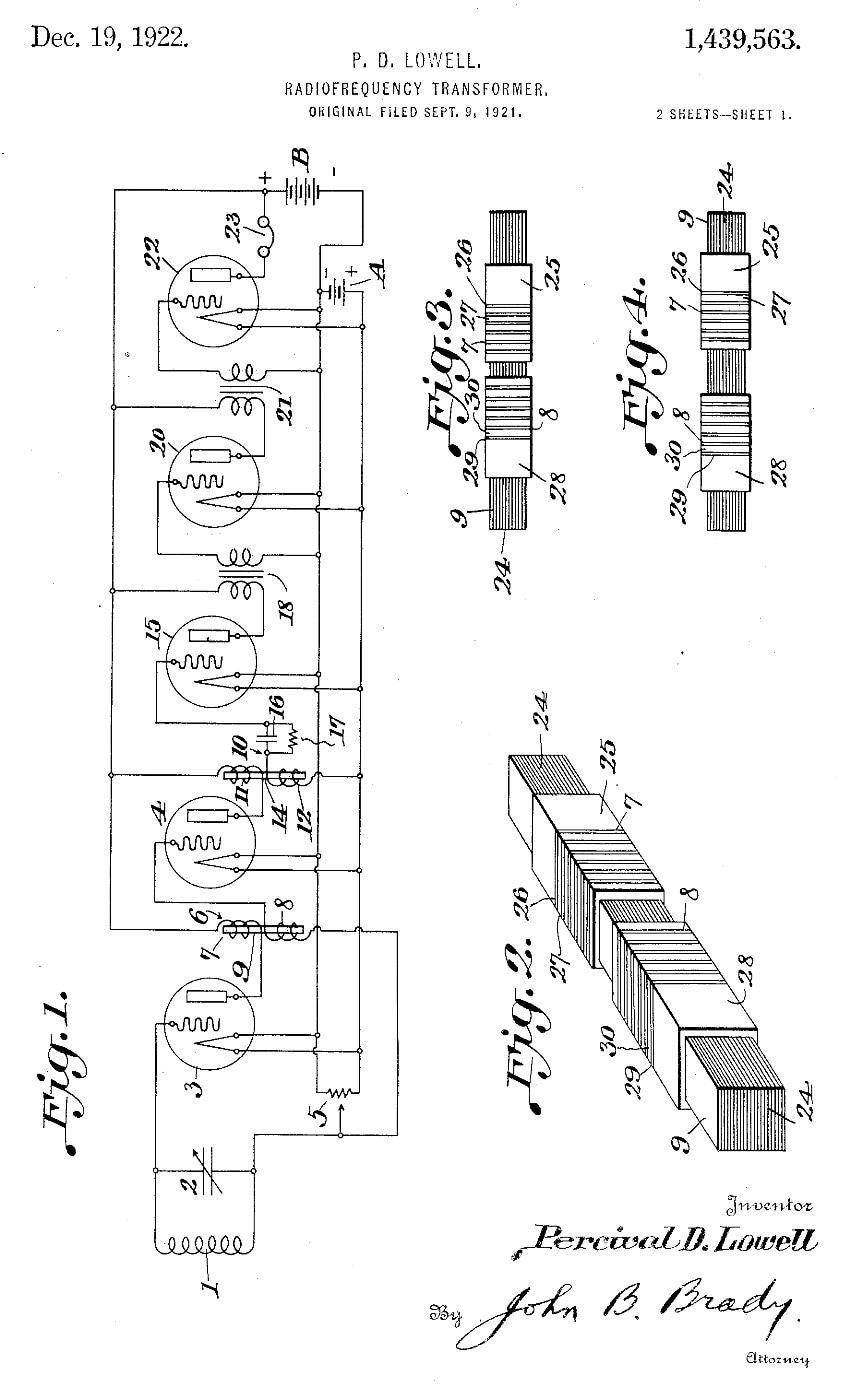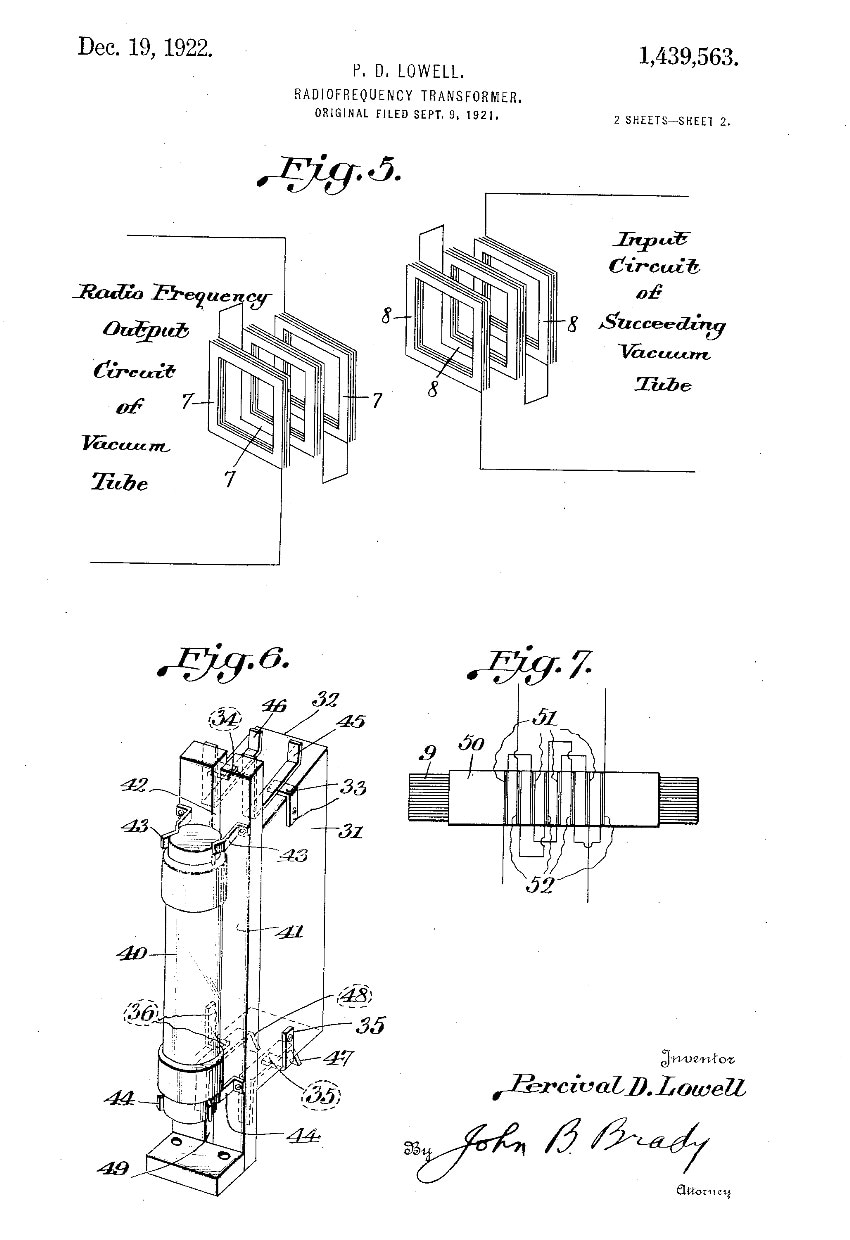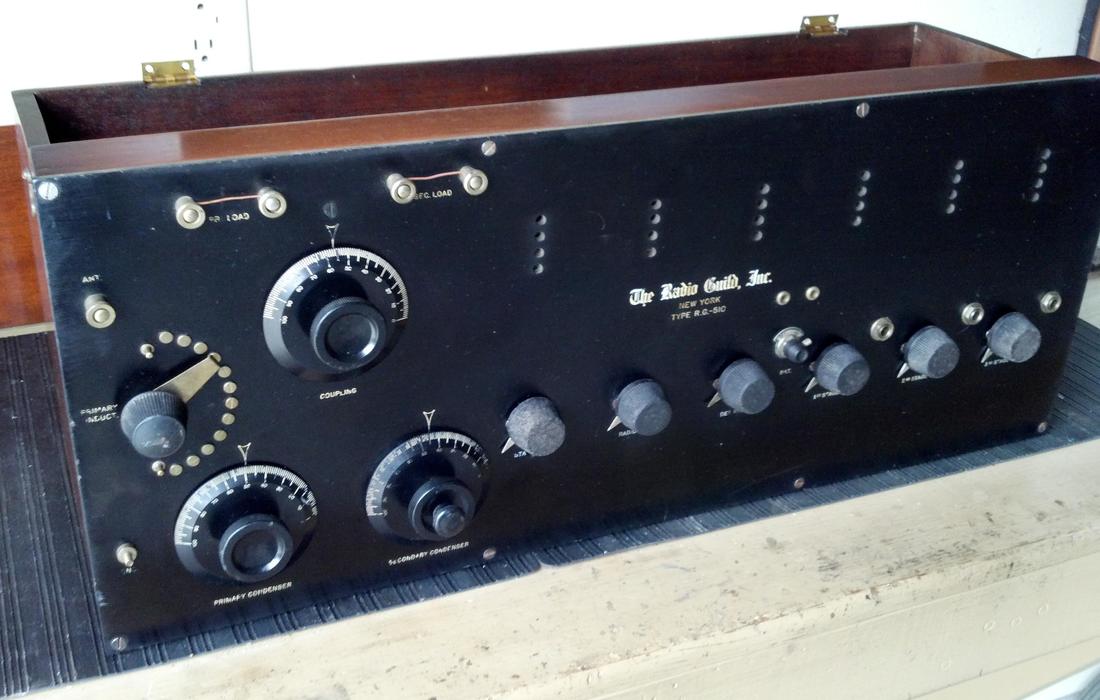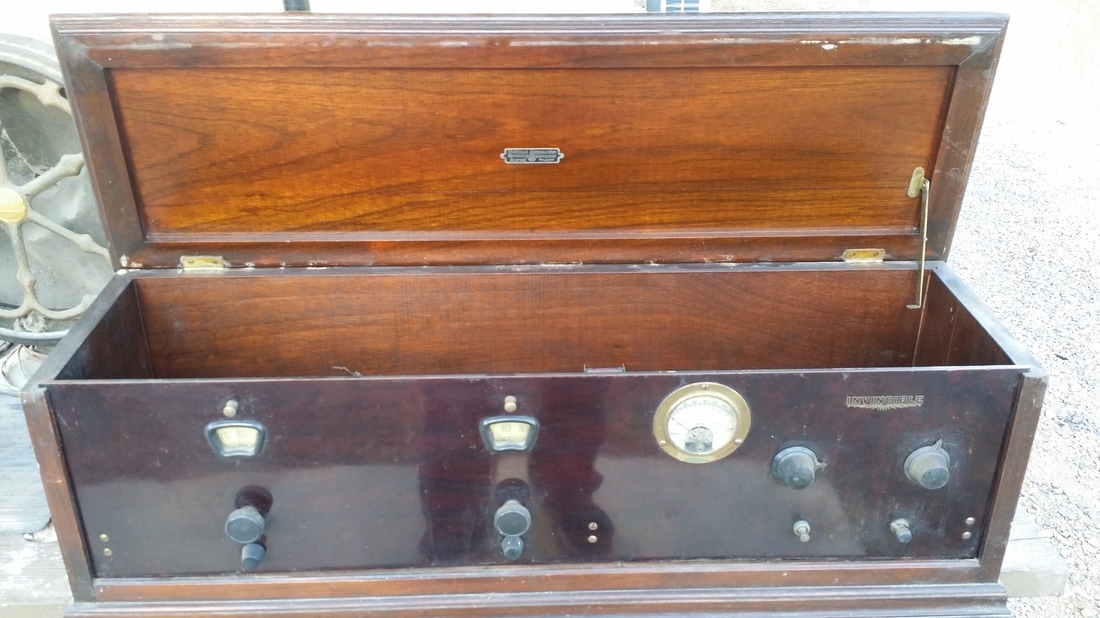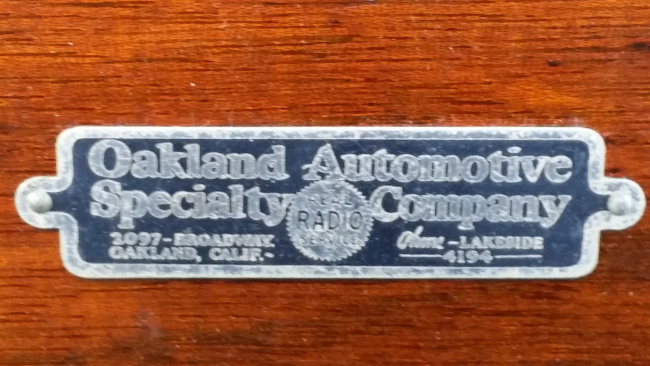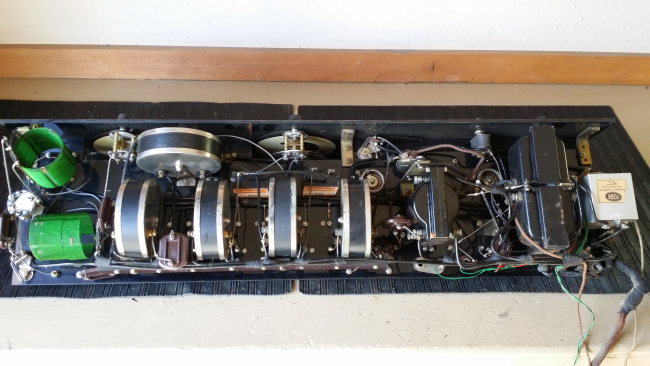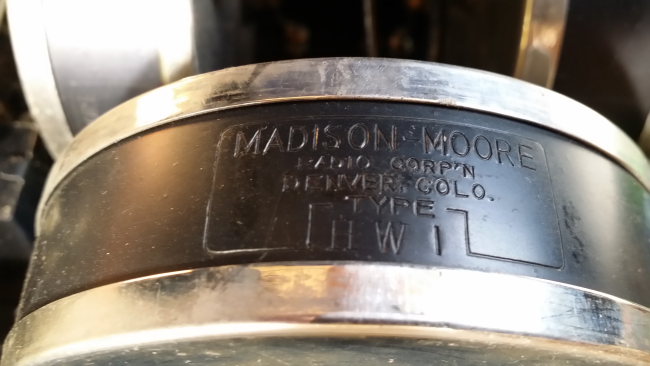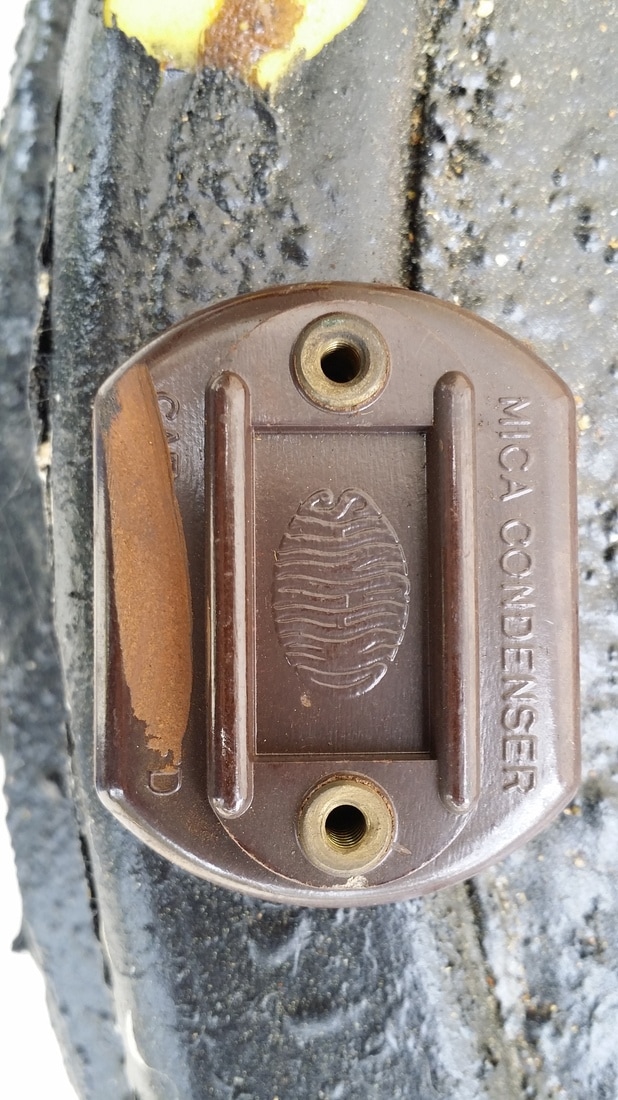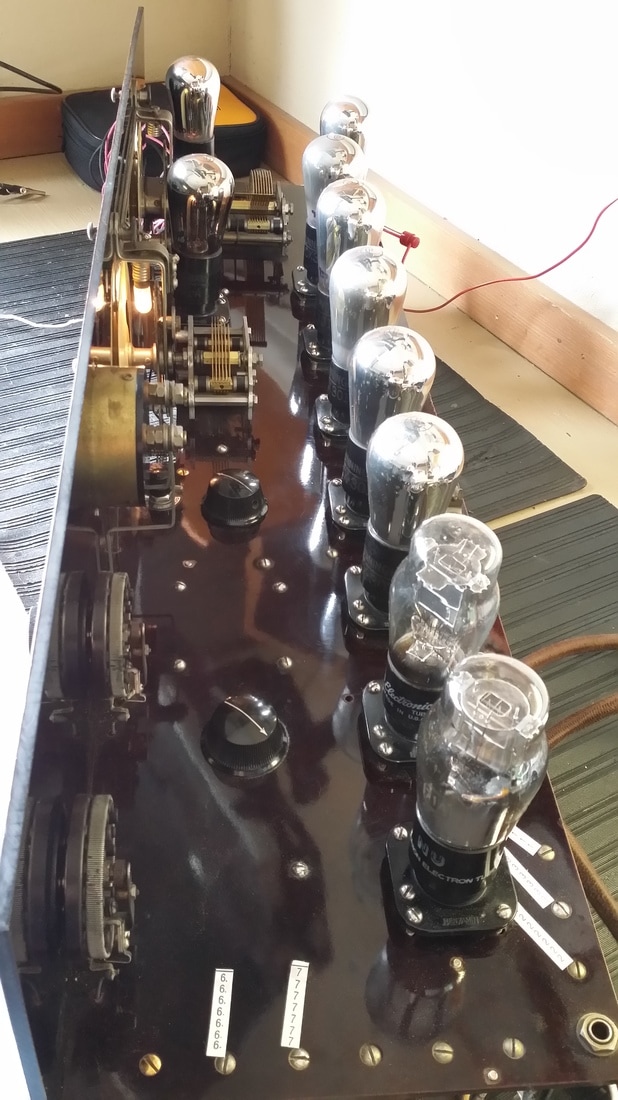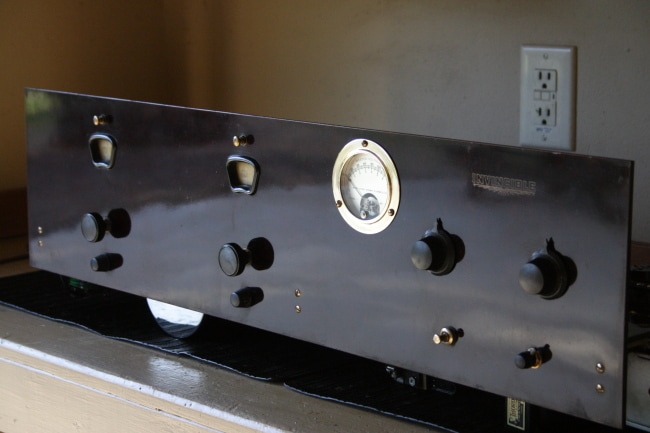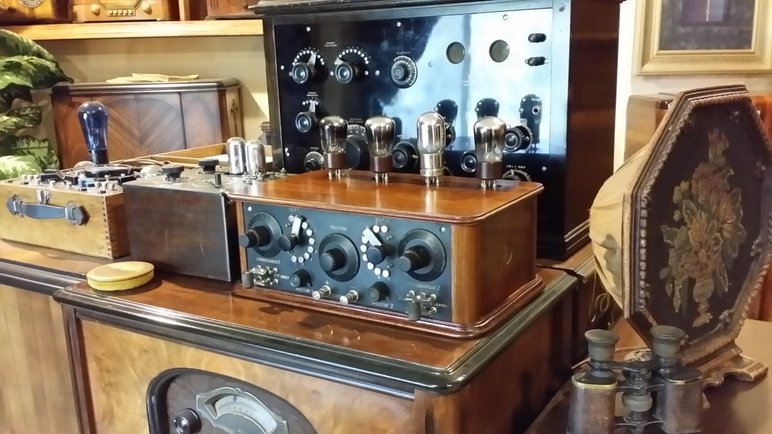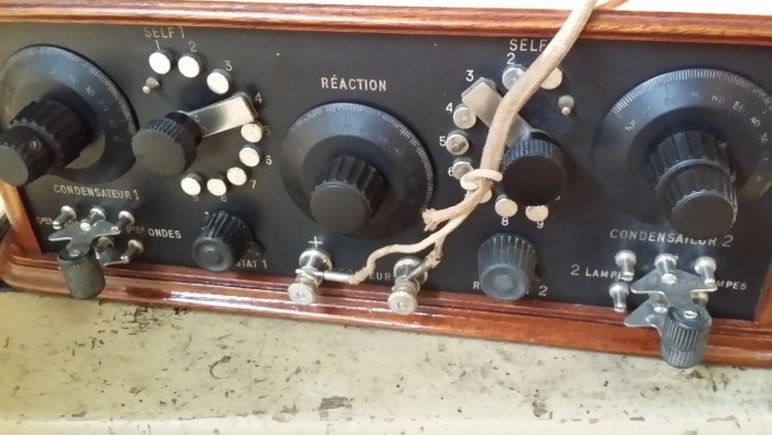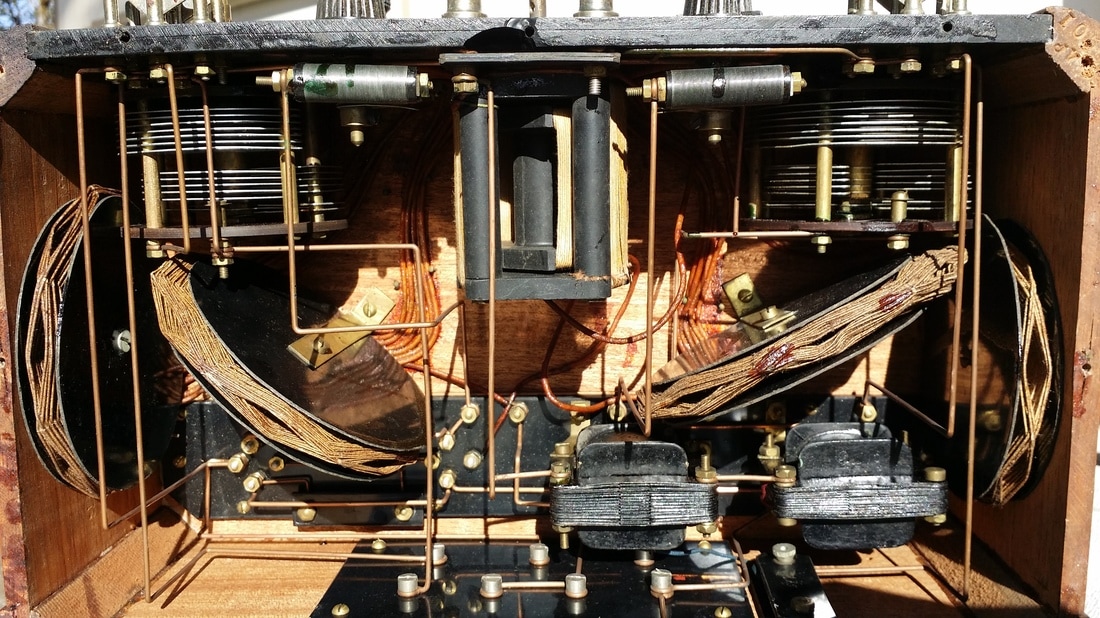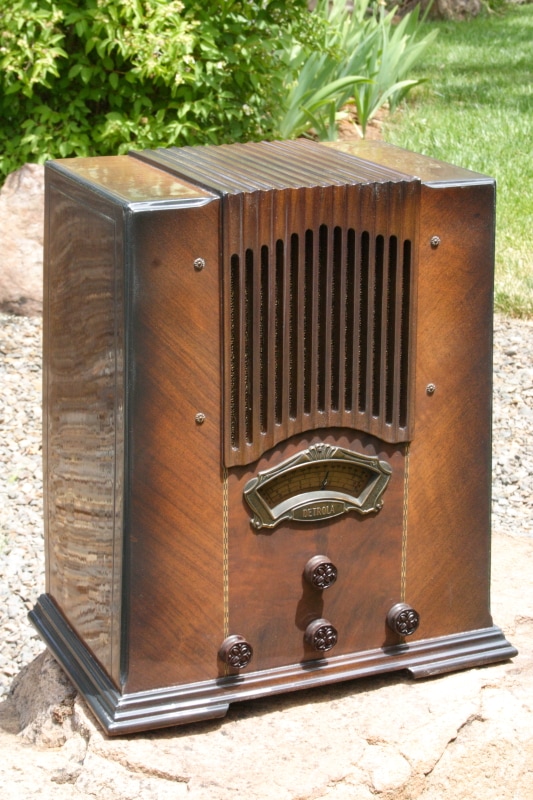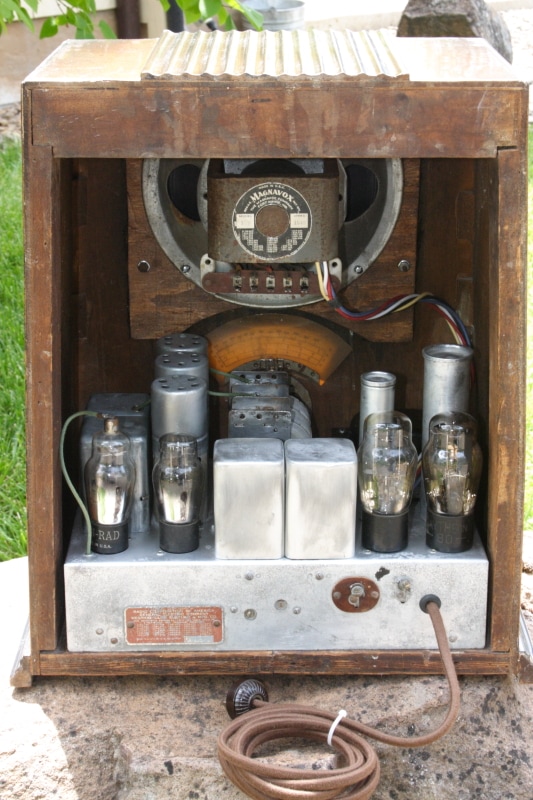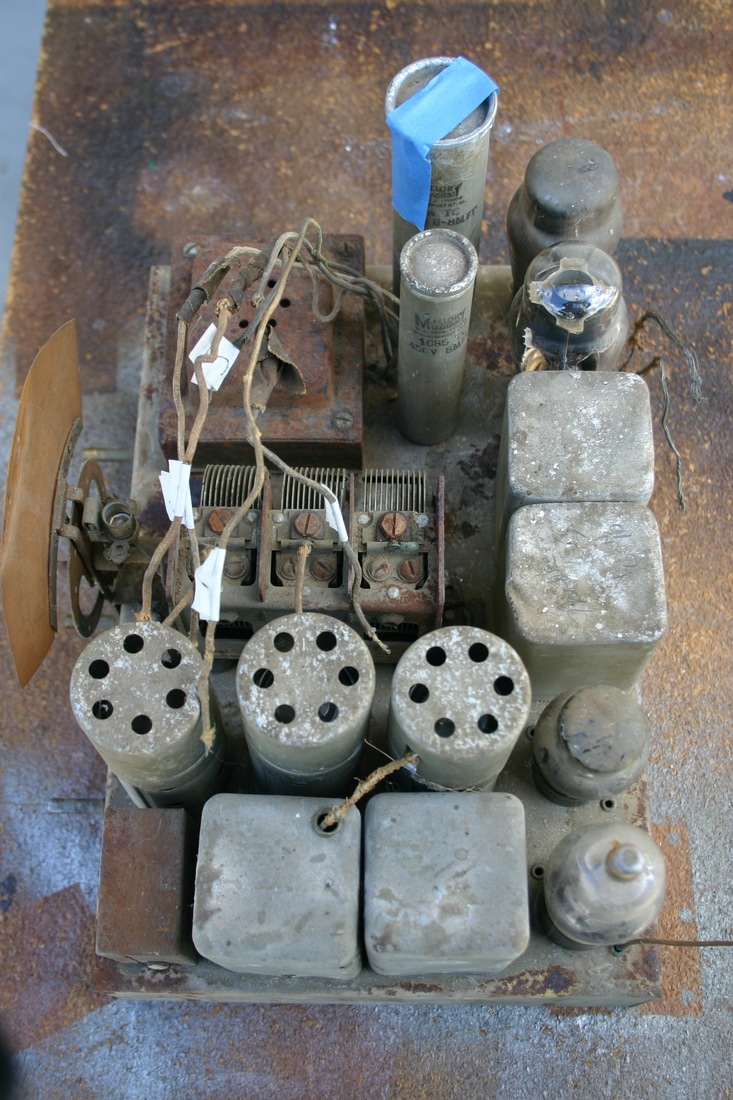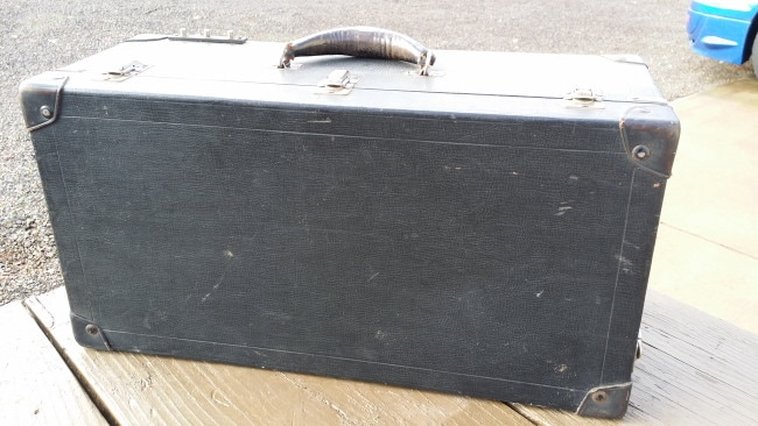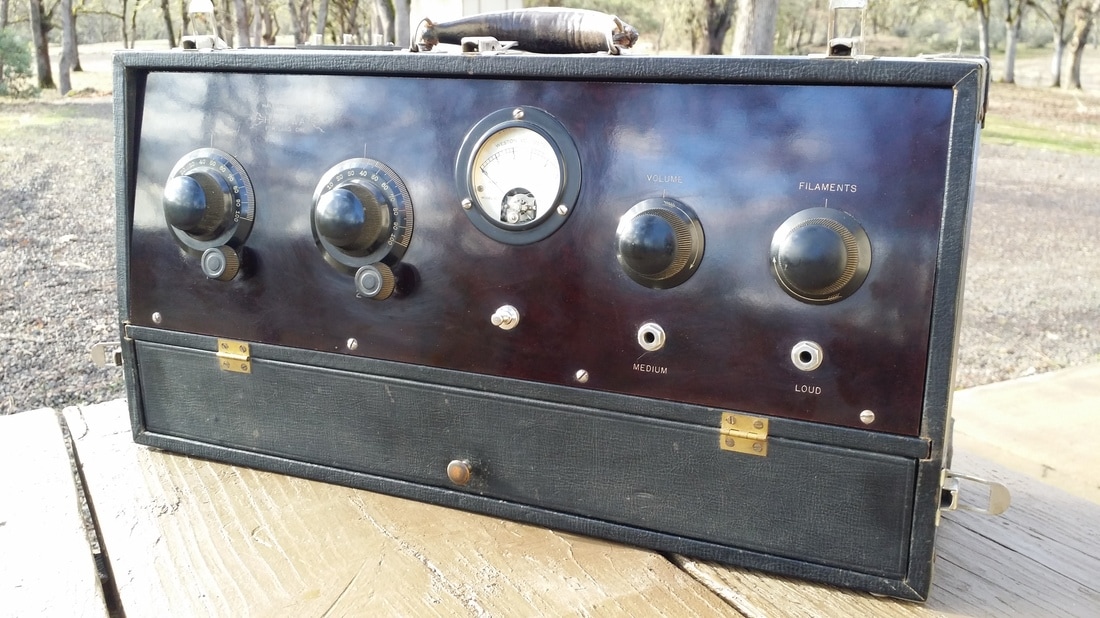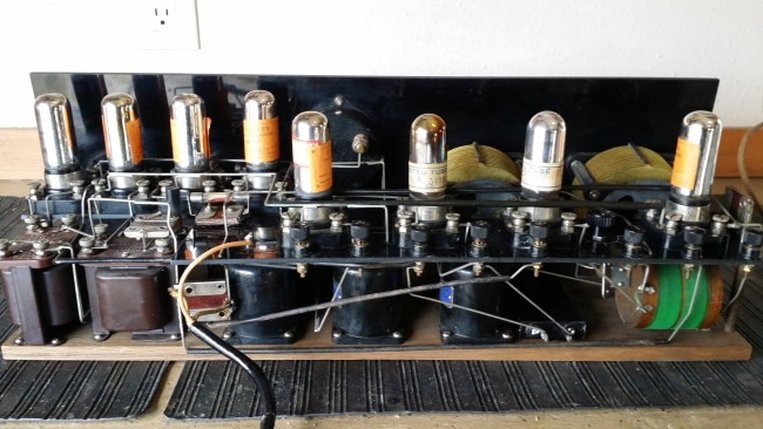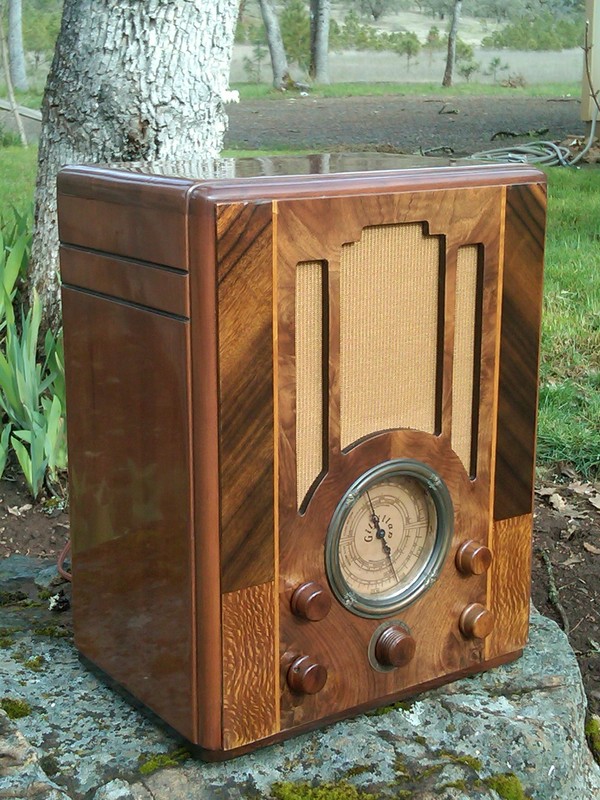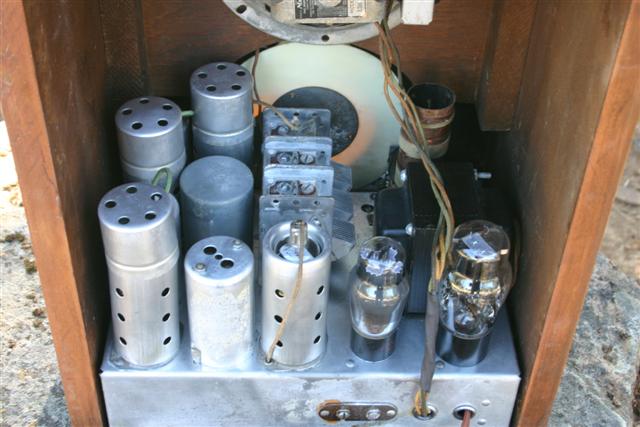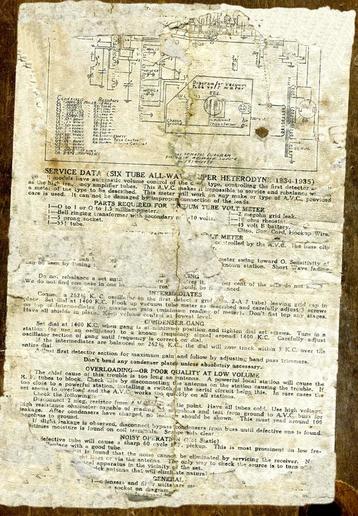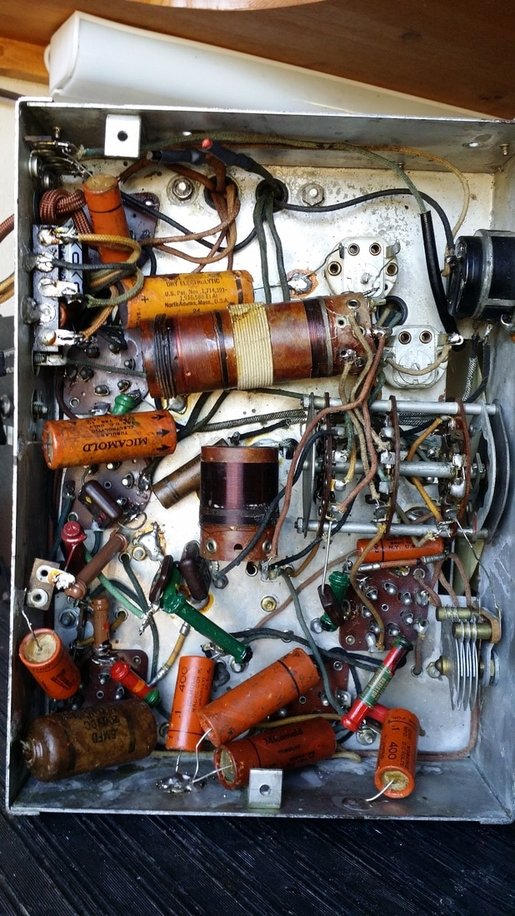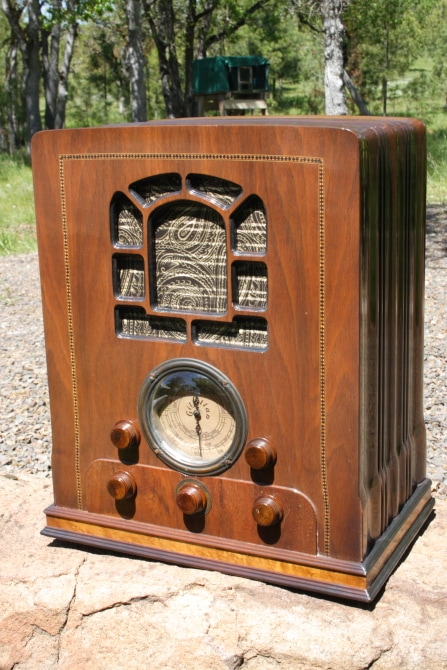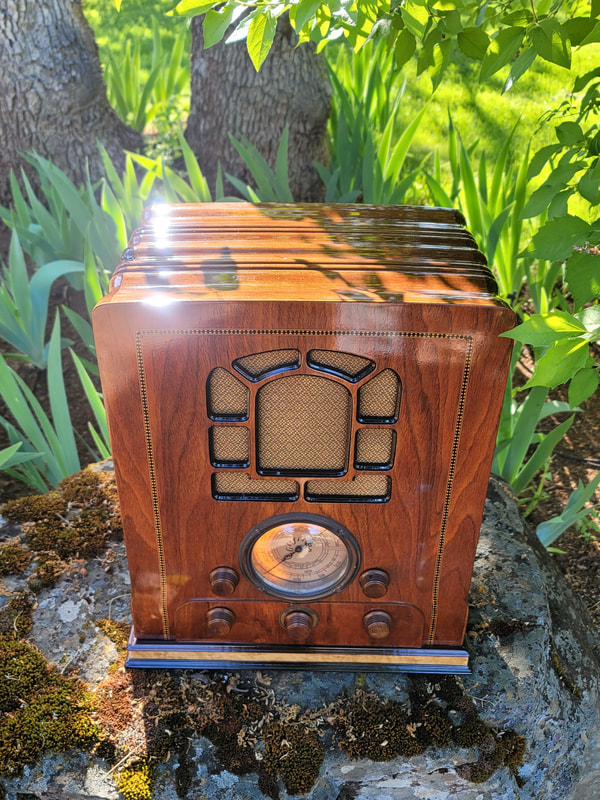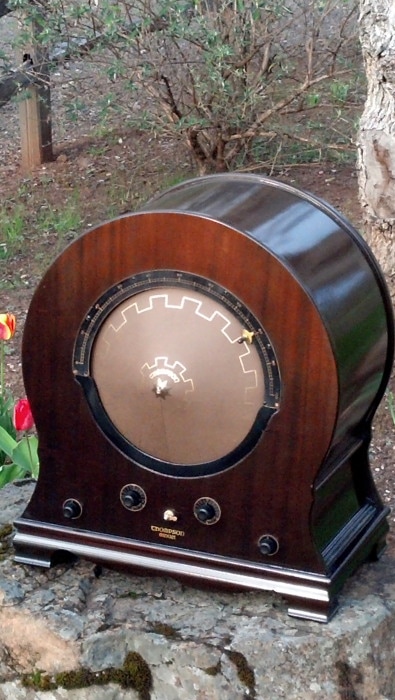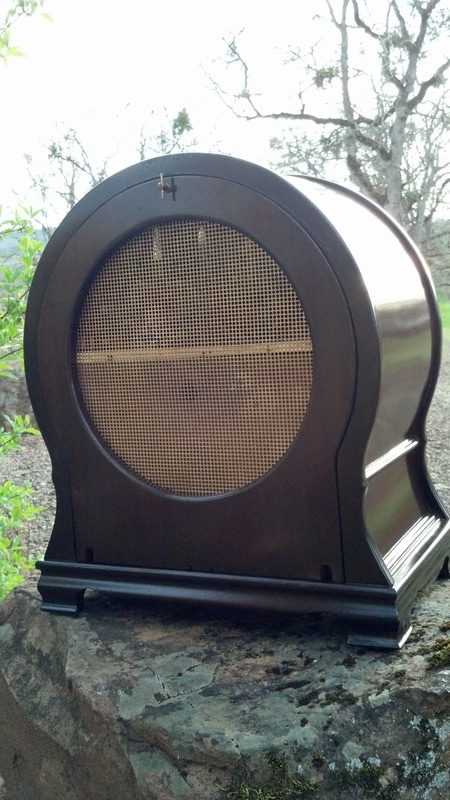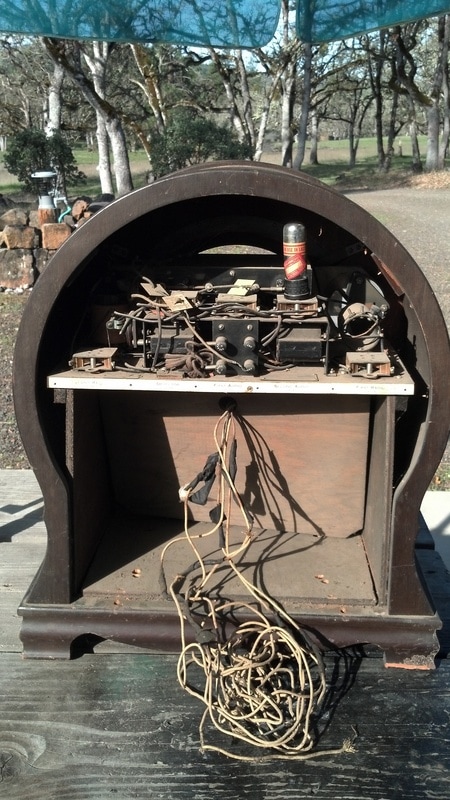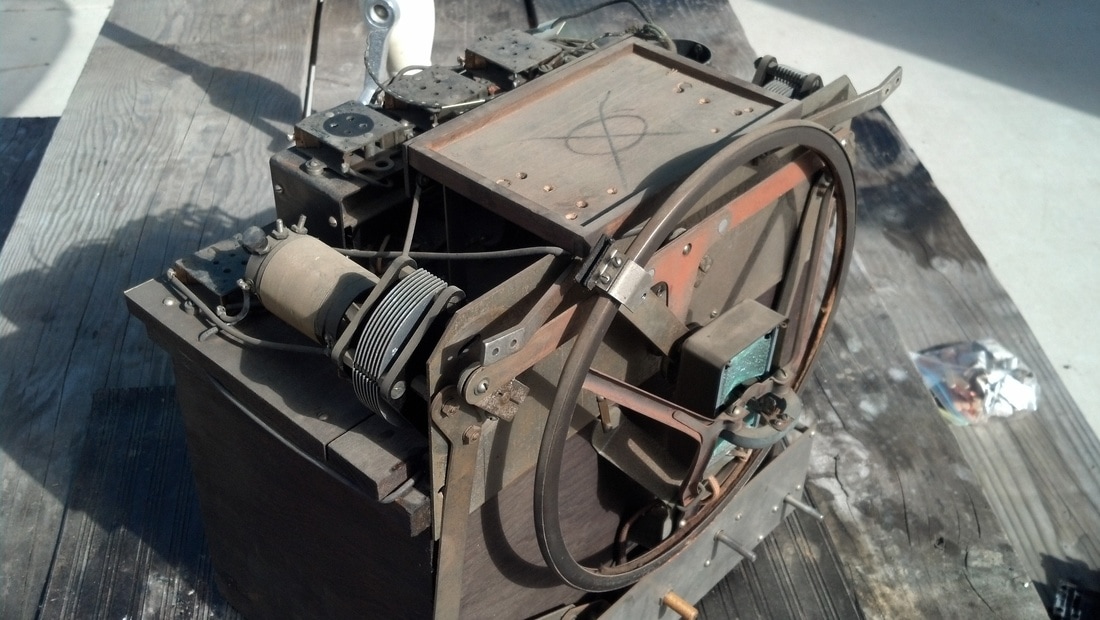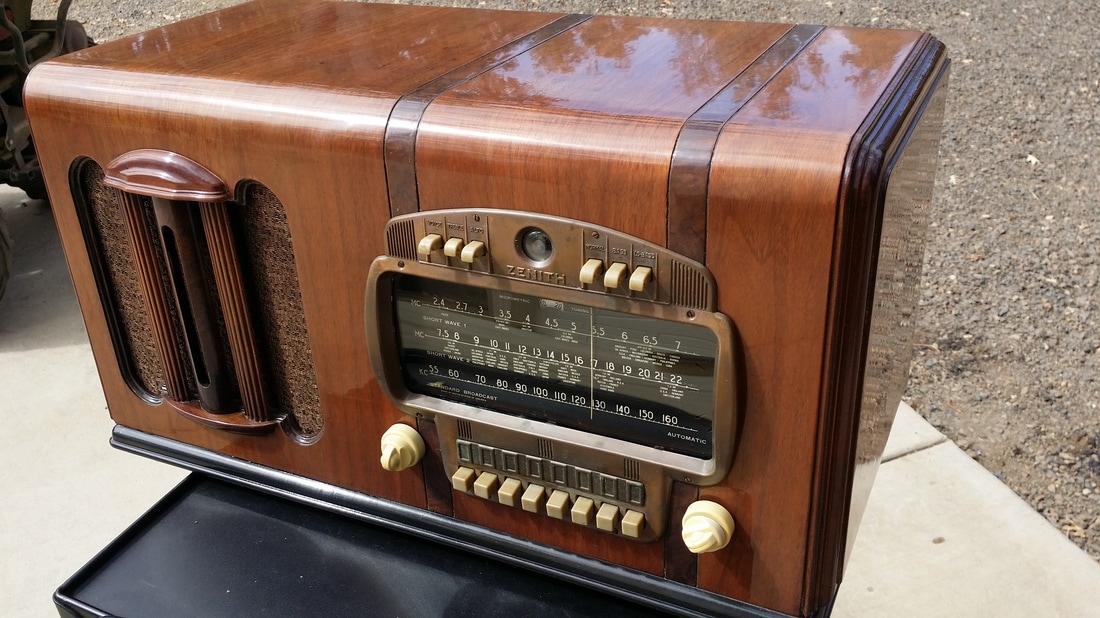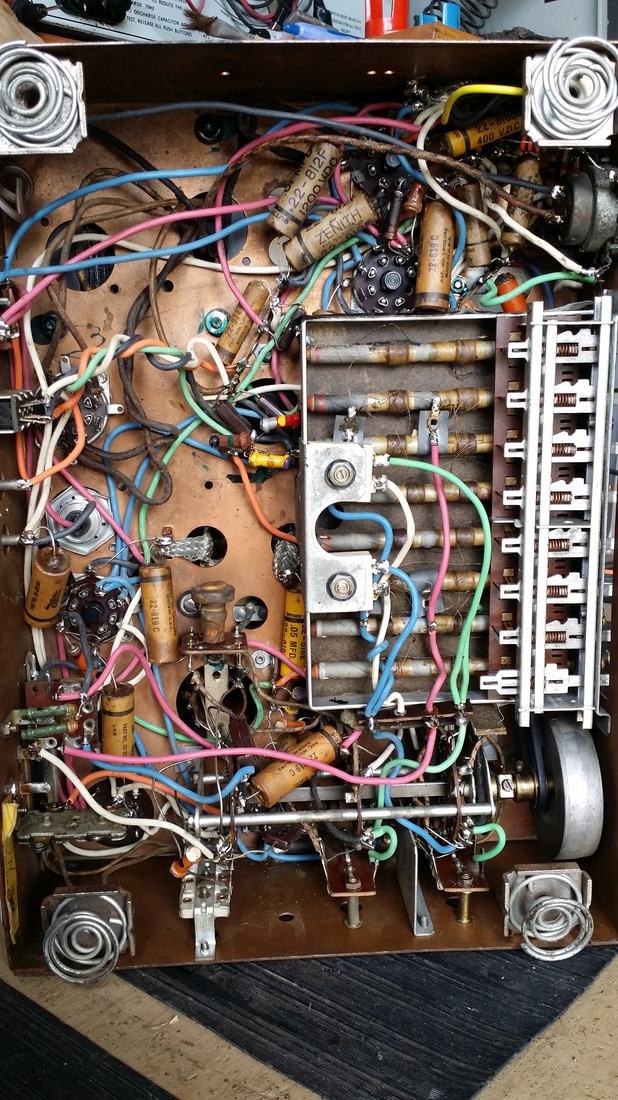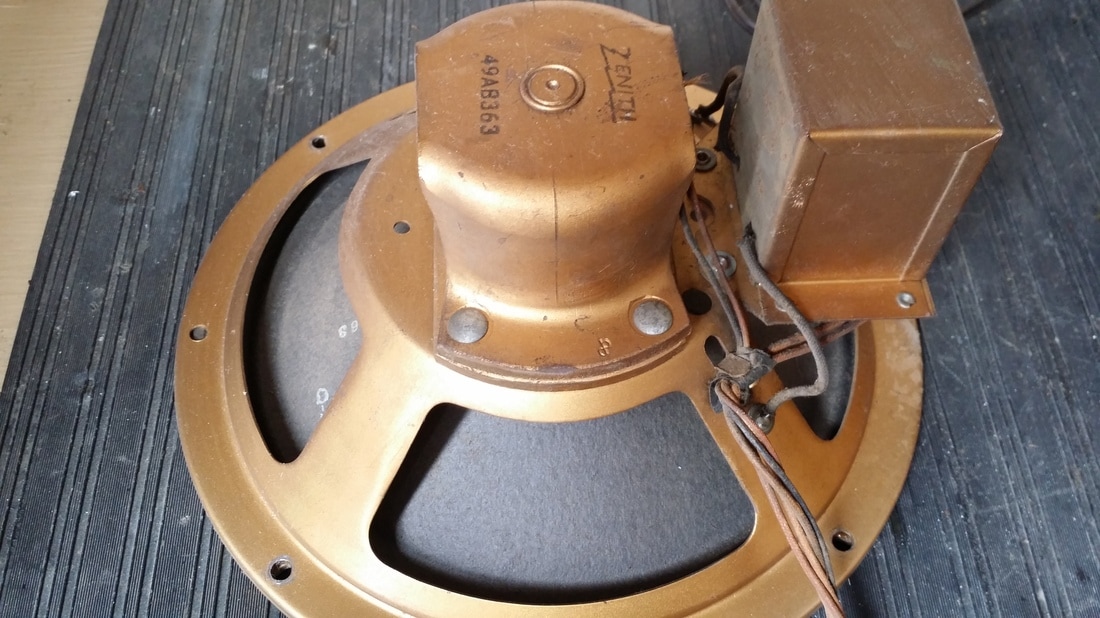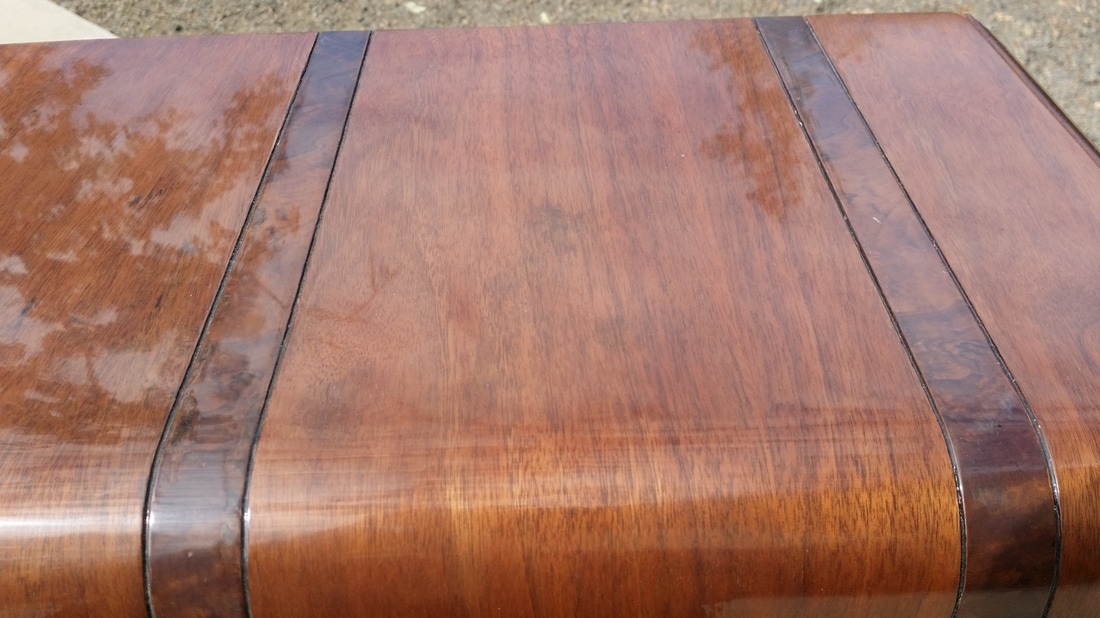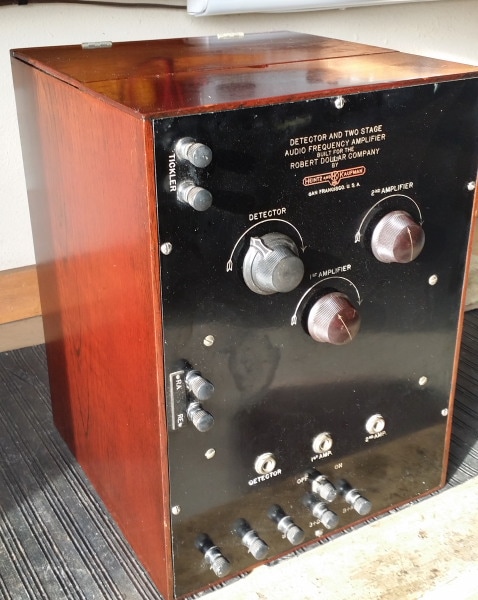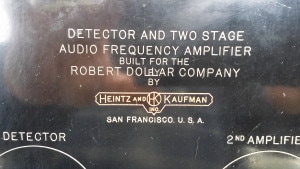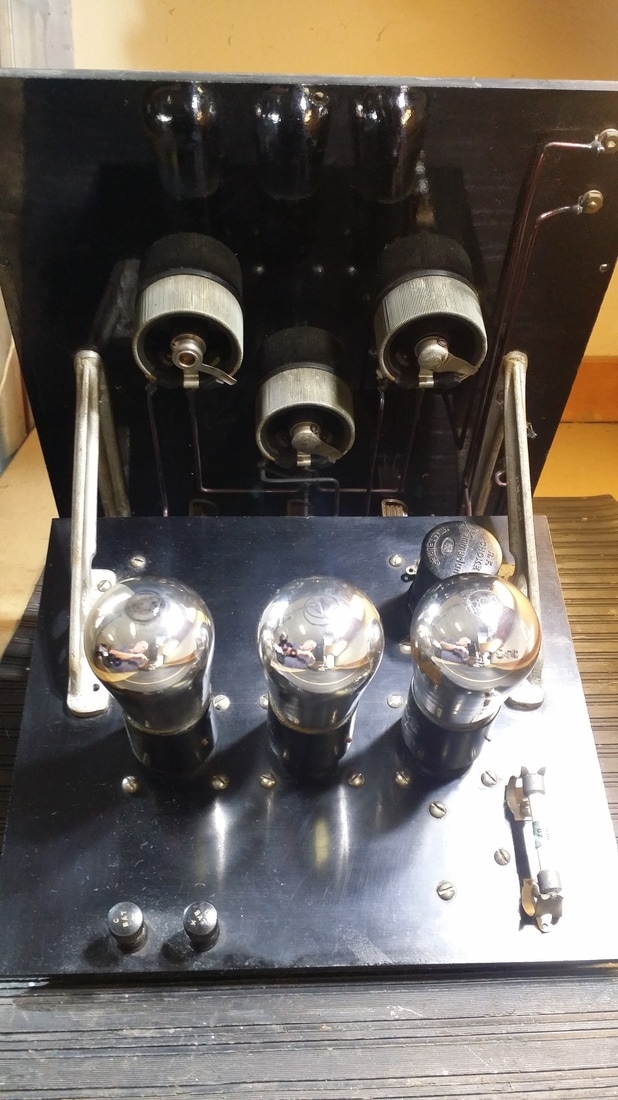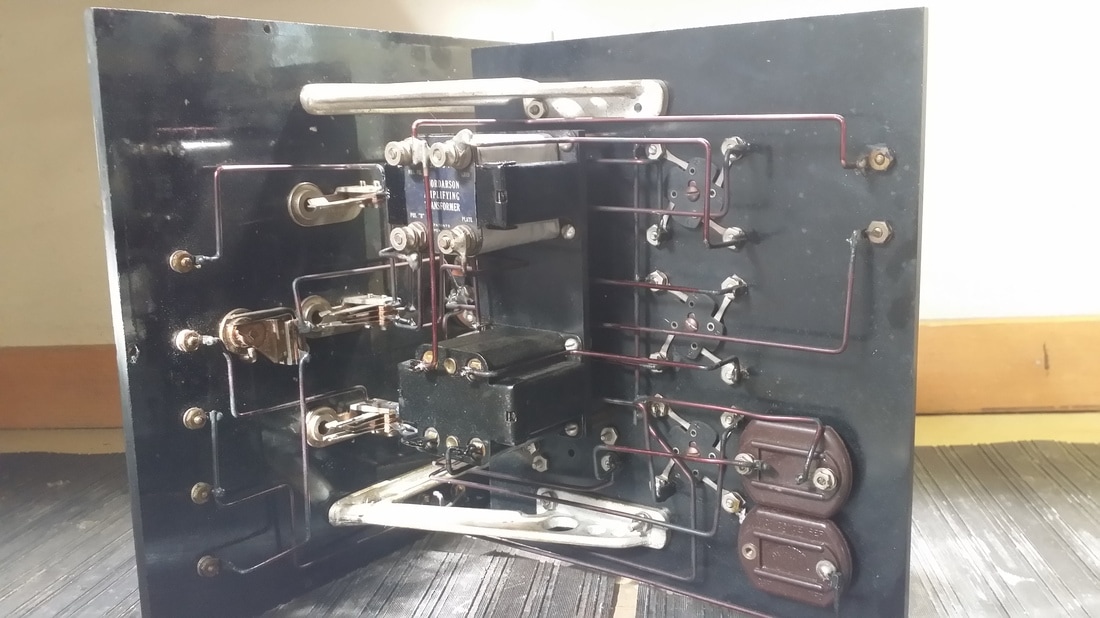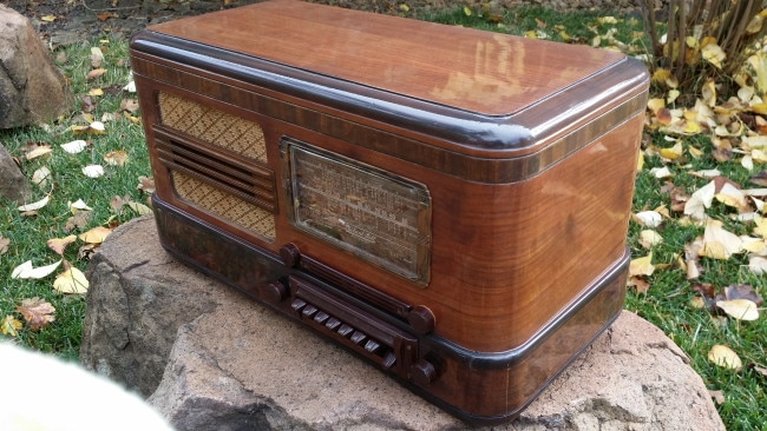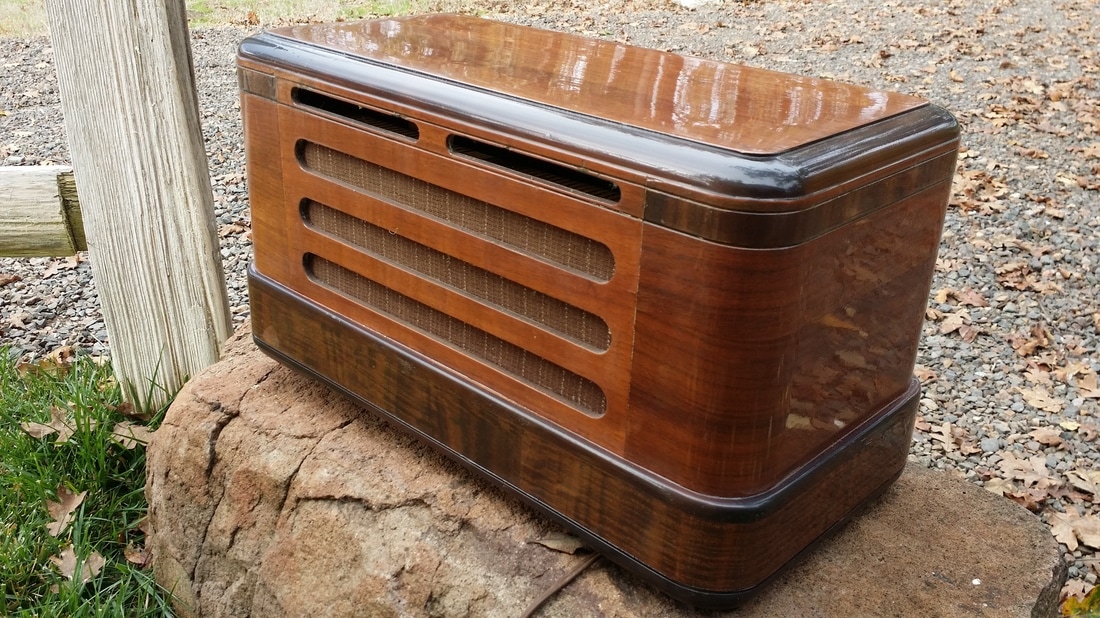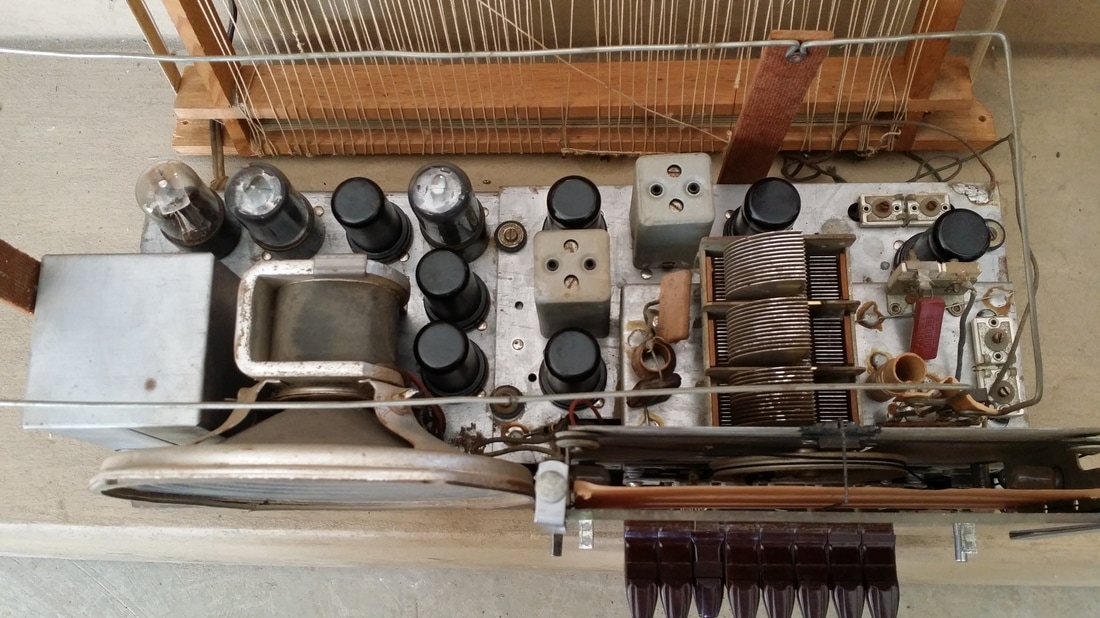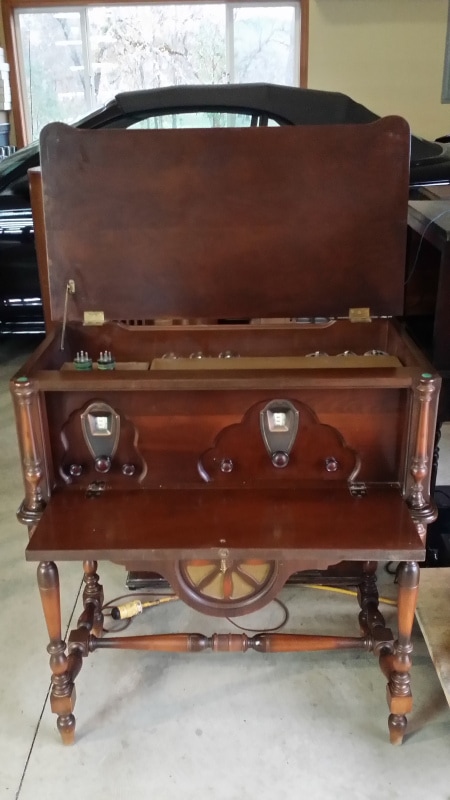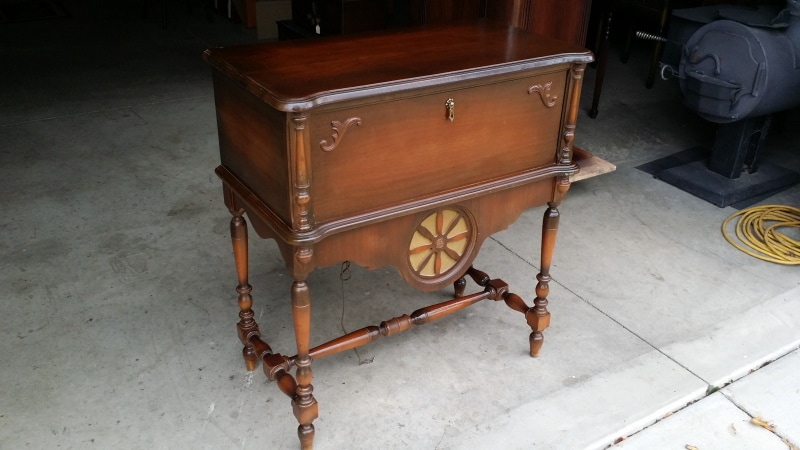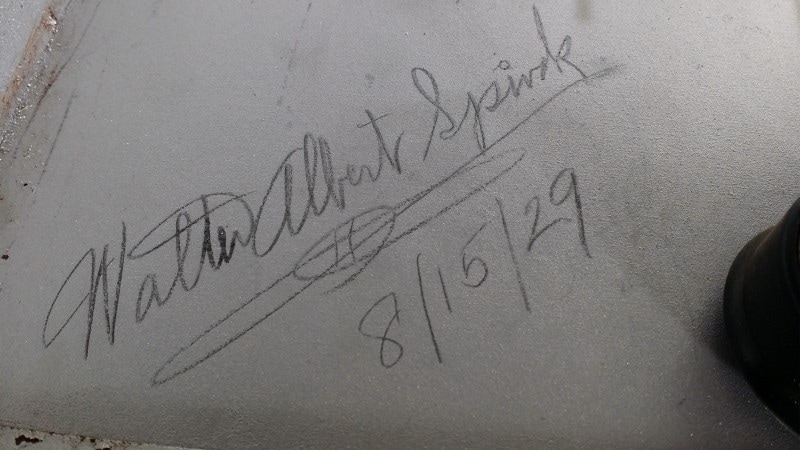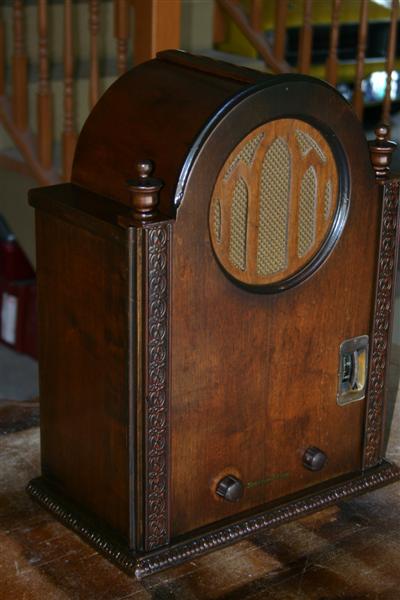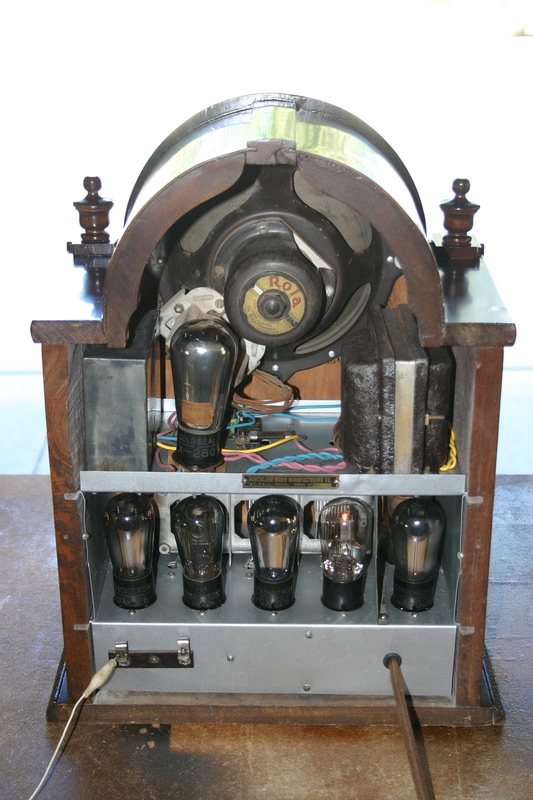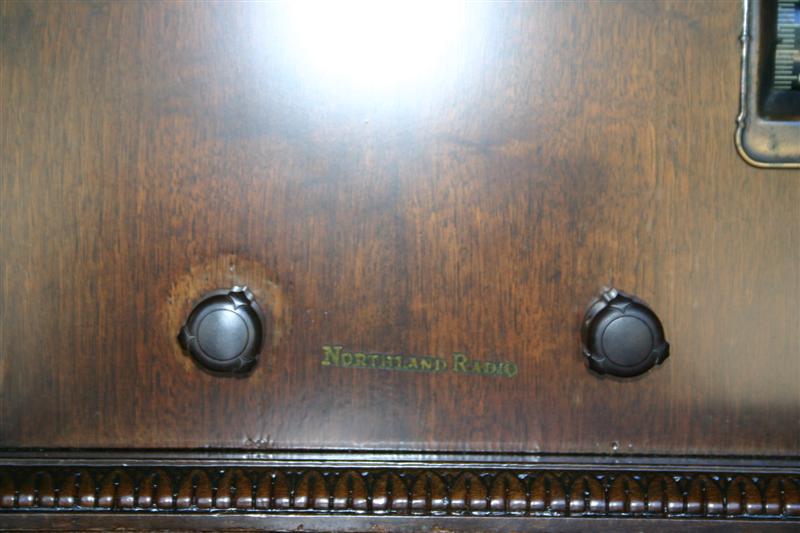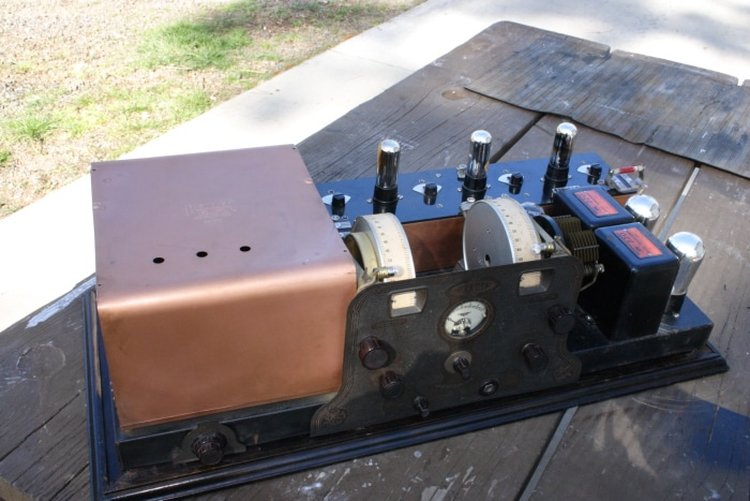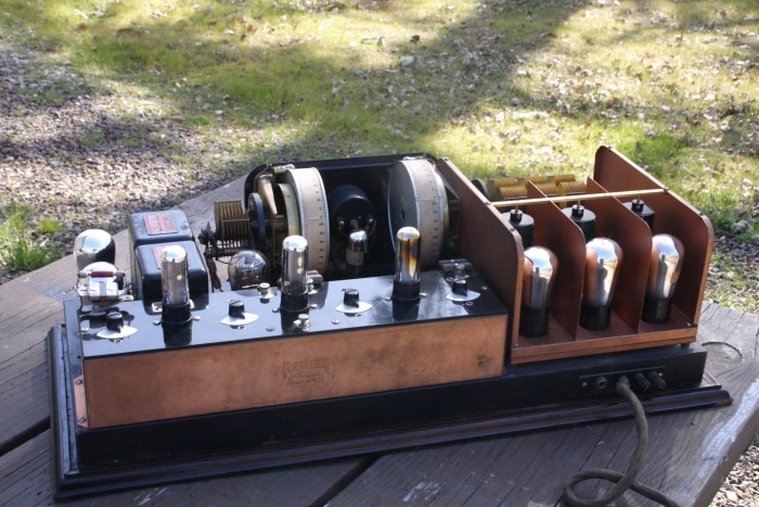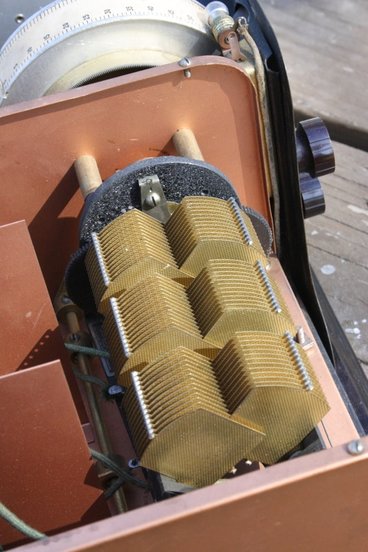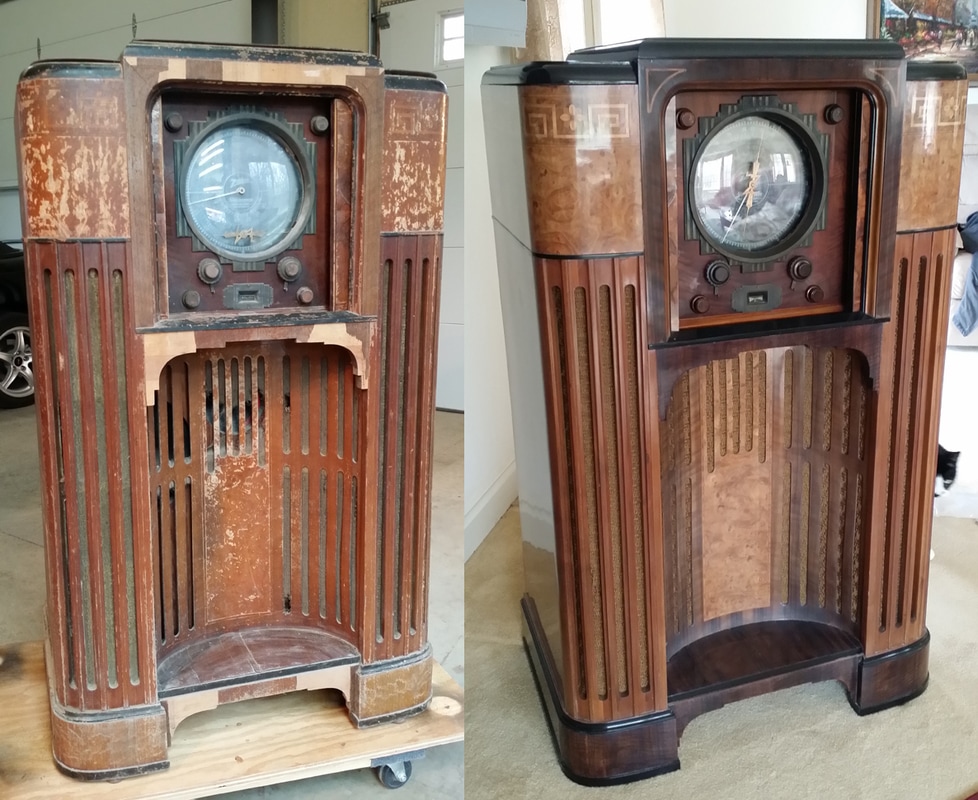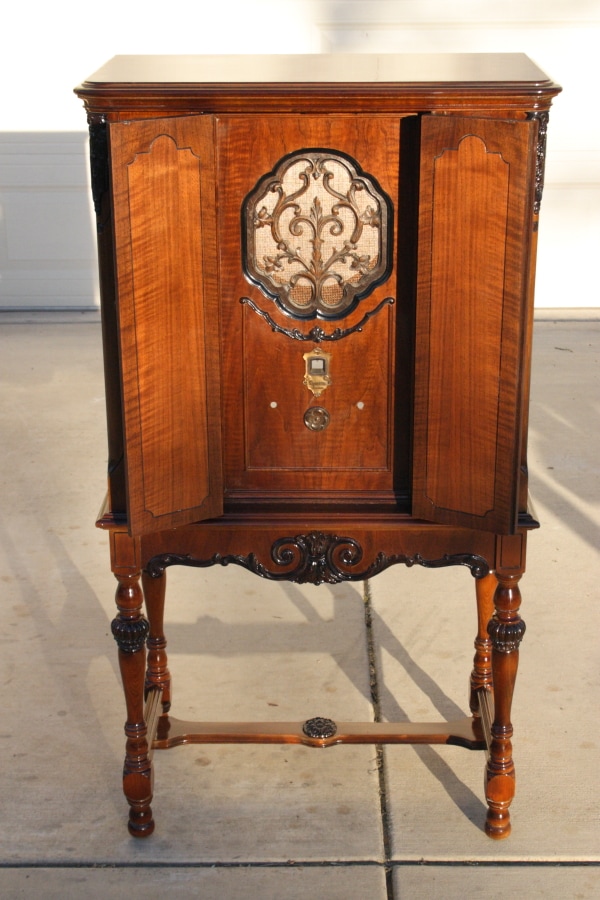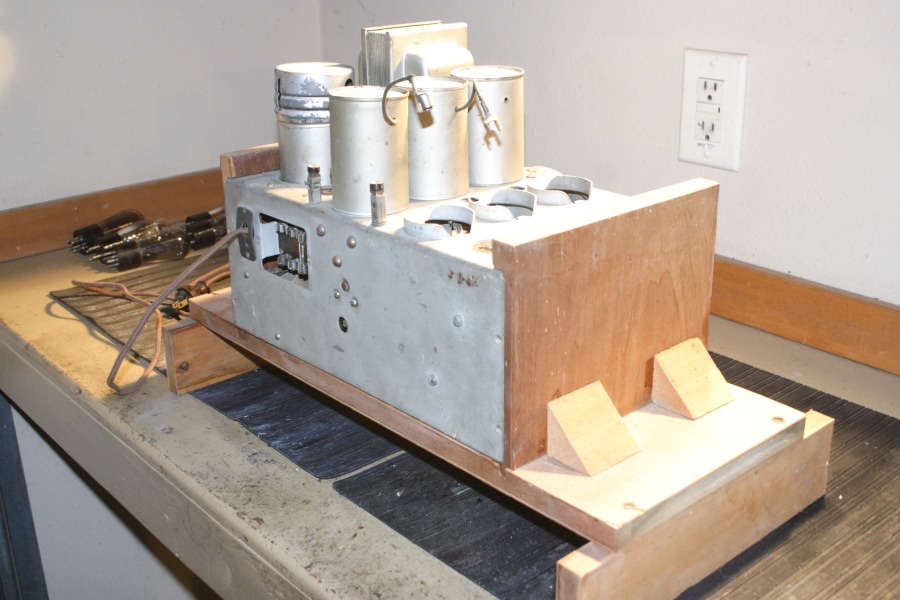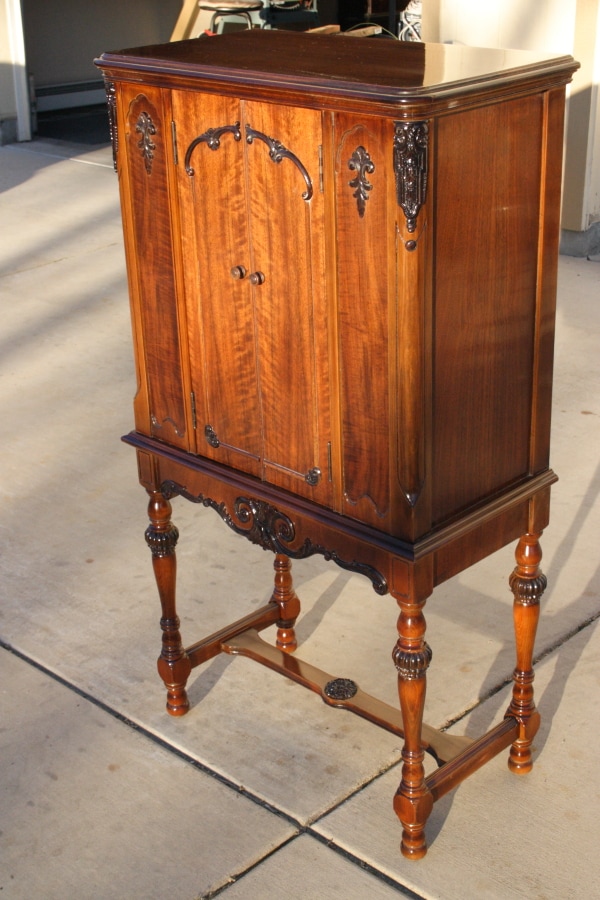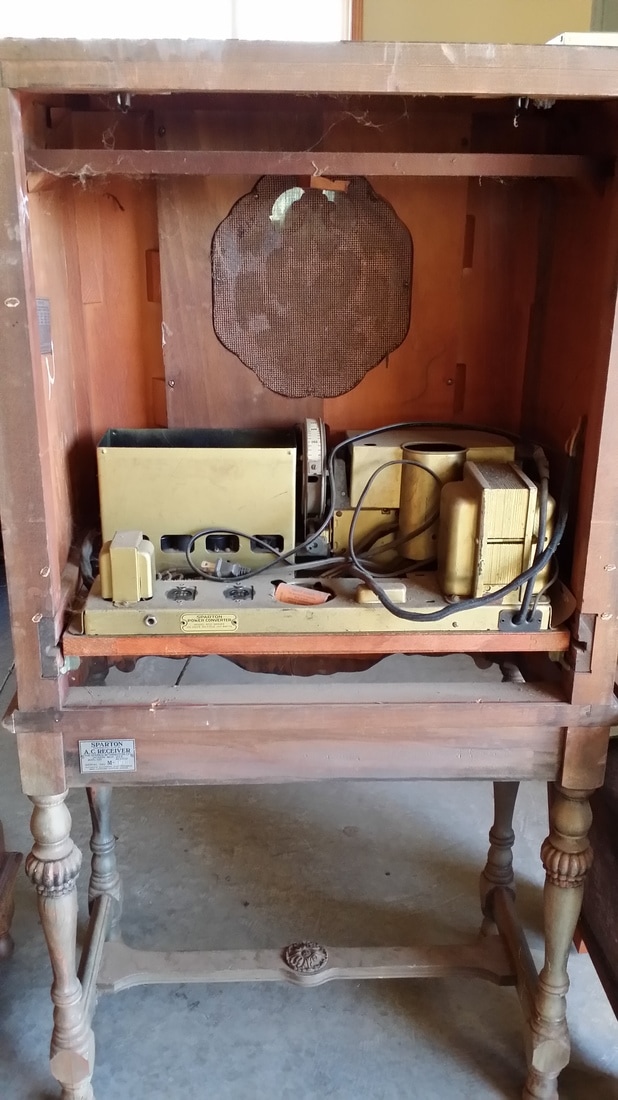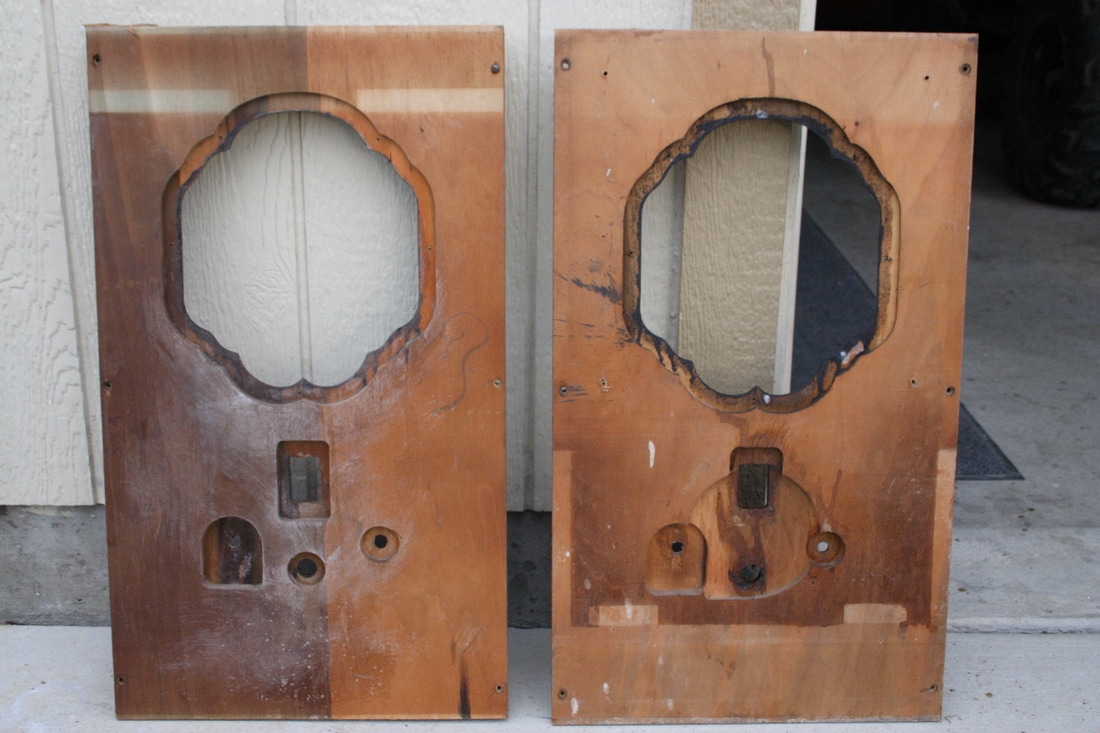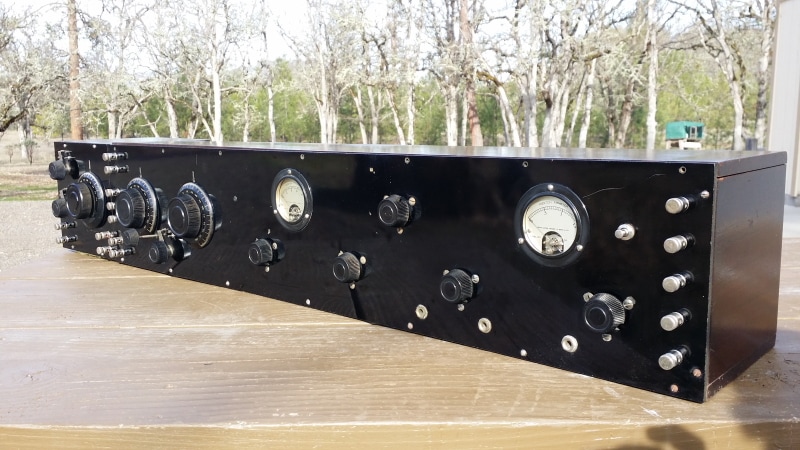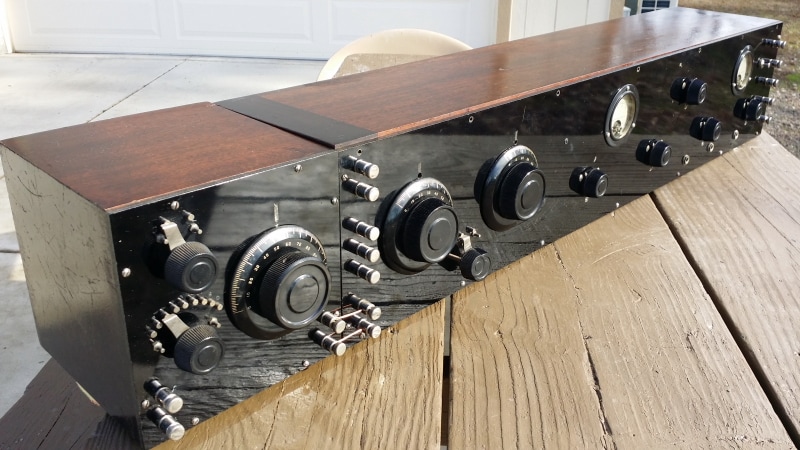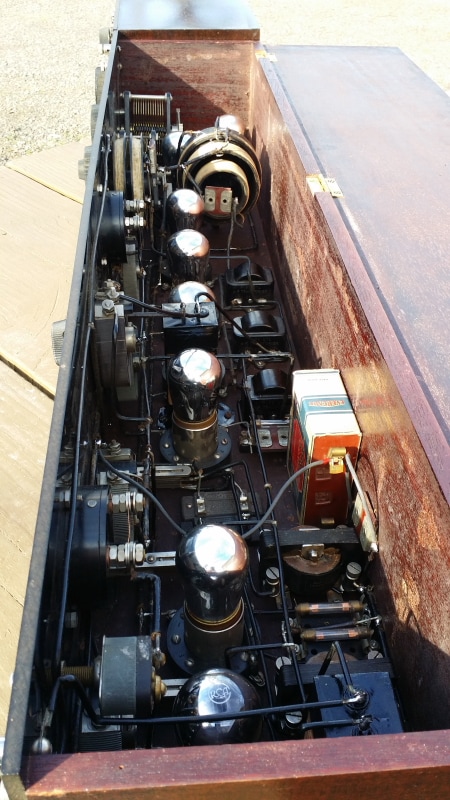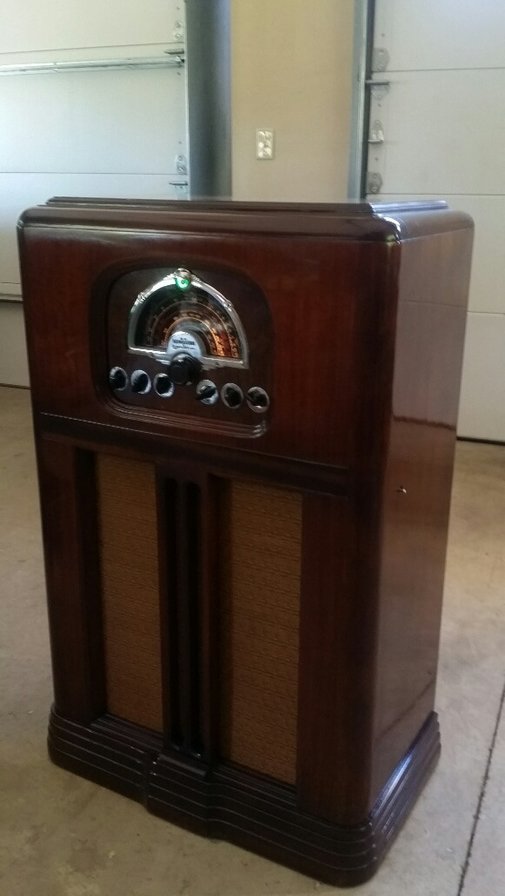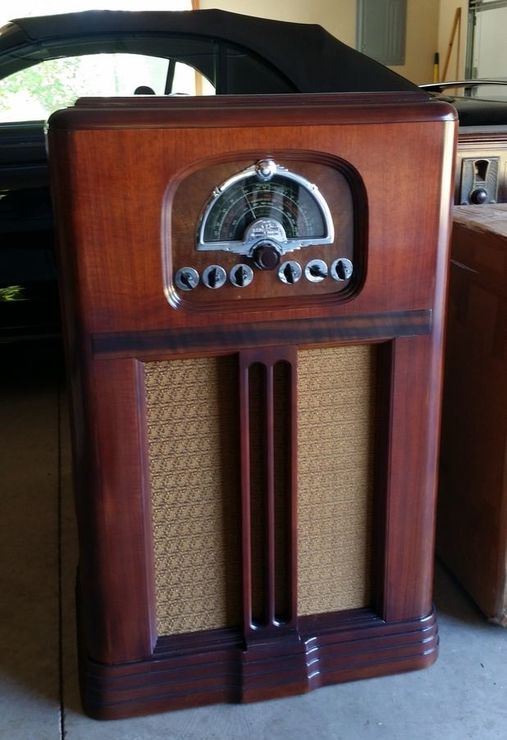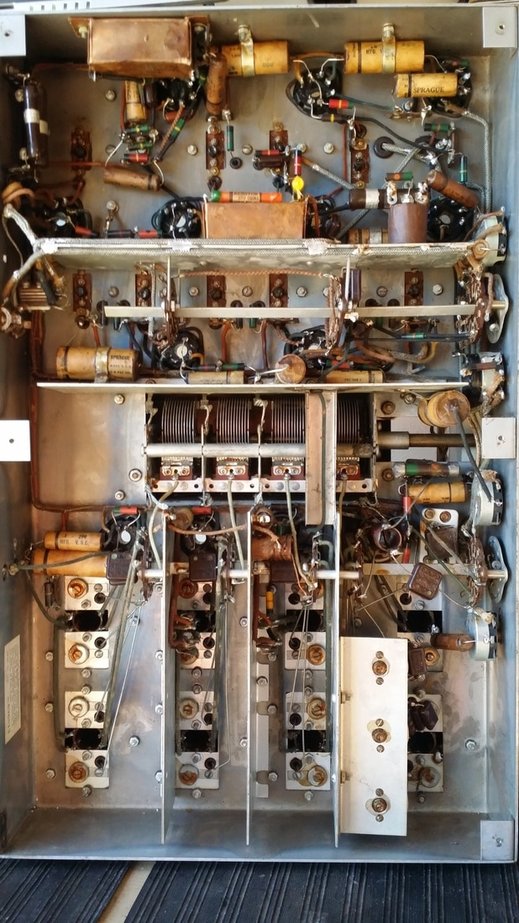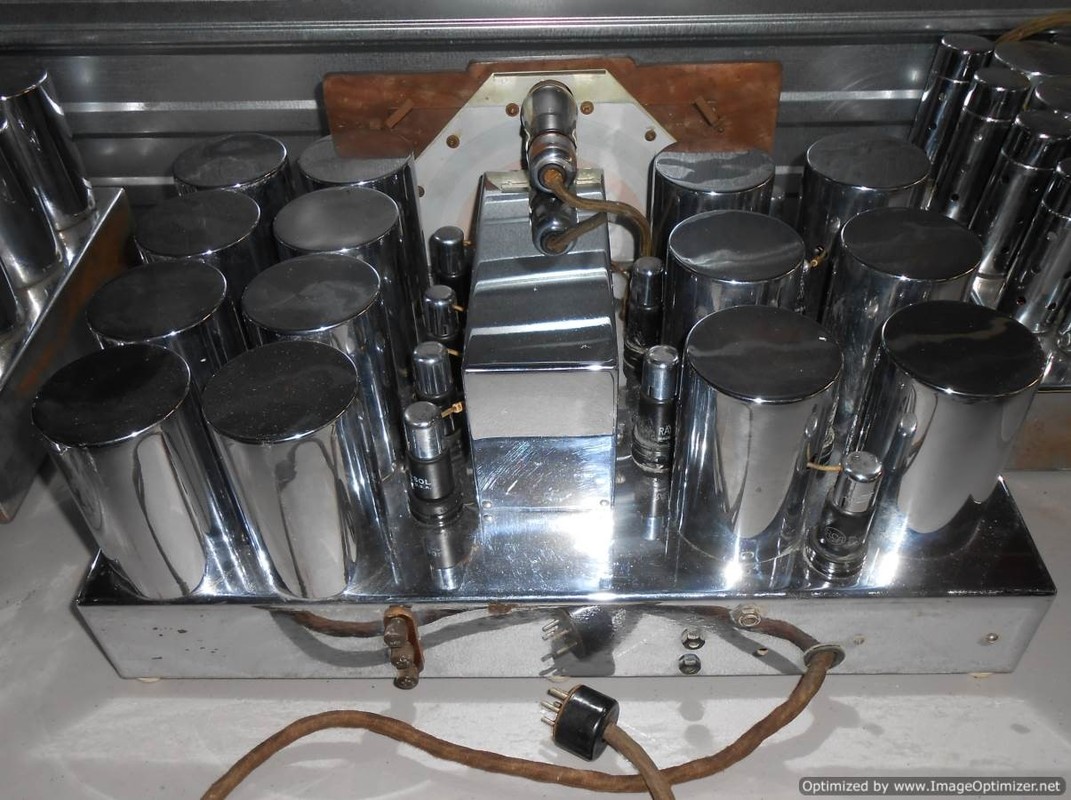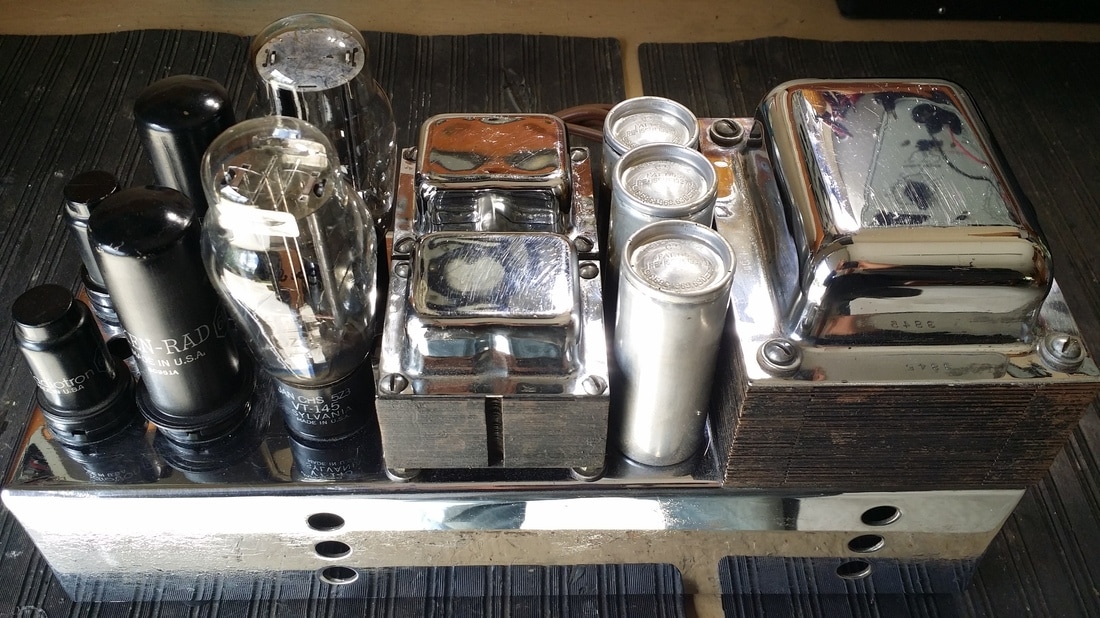The following are some unique and rare radios from the collection. Those that are unique may not be rare, but have some notable characteristic that is worth mention. Those that are rare may be one of a few known examples or the only one that is known to us. The comments with each radio will indicate what makes it stand out. If visitors provide additional information it also will be posted.
The question of value seems to be connected to the notion of "rare". I can say for sure that rare radios are not always especially valuable. The problem with assigning value to an item that is one of a kind is that there is little or no sales history.
Since these radios are unique, I feel the need to mention that these pictures, as with all pictures on this site, may not be used elsewhere without permission. I am trying to avoid water-marking them.
So, in no particular order - -
UNDER CONSTRUCTION - - - - -
The question of value seems to be connected to the notion of "rare". I can say for sure that rare radios are not always especially valuable. The problem with assigning value to an item that is one of a kind is that there is little or no sales history.
Since these radios are unique, I feel the need to mention that these pictures, as with all pictures on this site, may not be used elsewhere without permission. I am trying to avoid water-marking them.
So, in no particular order - -
UNDER CONSTRUCTION - - - - -
THE BIRDHOUSE - Airline/Glorytone 105/106 from 1931
The cabinet is similar to other Glorytone models of the time but this one is marked Airline so it was sold by Montgomery Ward. I have seen pictures of one other, online, but there was not a description or mention of the brand name (Airline). Sue called it a "Birdhouse". I guess we are lucky it had not been repurposed.
Tube line-up 224, 224, 224, 224, 245, 280. This was a common configuration in 1930 and 1931. These radios could have been much better if the 245 had been driven by a transformer coupled 227 rather than a resistance/cap coupled 224, but that would have cost more.
Restored underside of chassis. Note that most of the dog-bone resistors are new. (recast) The paper caps are the foil-on-stick type which take a special effort to rebuild. Restuffing the original caps is not really a good descripting for this process.
Upper right, on display. In this picture the bead-work above the dial escutcheon had been restored. It is missing from the earlier pictures.
Parker McCrory Masterpiece 733 From 1937
This is a very deluxe, battery powered radio. It has 7 tubes, two speakers and a vibrator type power supply that runs off of a 6V battery. I have seen pictures of 2 others of this model. It is notable because of it's scarcity, it's high quality and for the existence of the original box (below).
Found in the original box, it was not like-new. Damage to the cabinet trim required the cabinet to be refinished. The veneers used are stunning.
Note the two speakers. The tweeter (top) is more typical for a battery radio being a "pin-type" using a natural magnet for it's field. The woofer (lower) uses a field coil type magnet that is inline with the filament of the audio output tube (only). The other tubes are in a separate filament string powered by the 6V battery.
Bestone 40 From 1936
Here is a little table radio of which little is known. Bestone seems to be a brand name used by several companies both in the US and abroad. I have found no other examples of this radio or any other models of US make in the time period in which this one was produced.
Prior to restoration: This is a very small radio, yet they managed to get 4 tubes and a ballast onto the chassis.
Radio on display, top center, for size comparison.
The Radio Guild R.G.-510 From 1923
Here is an early 1920's set from an obscure manufacture "The Radio Guild". I have not seen any other specimens of his model. This set is well built so it probably was not a kit. The cabinet has a serial number on it. The glow from the tubes could be seen through the series of holes in the front panel.
The circuit is not unusual though it does use 2 RF transformers that are socketed (pictured below). There are multiple headphone jacks on the front panel. You could use this receiver with only 4 tubes with the innermost jack. Then you could boost the audio with 1 or 2 more tubes each provided with an additional headphone jack. The set could have used 200 and 201A tubes. Each tube has a filament control.
The late Alan Douglas helped identify the manufacture with these ads.
Both of the modular RF transformers had an open winding. I had to disassemble them and rewind 1/2 of the transformer. The winding is shown next to the case above. Note the frequency range on the part and he ad below is 170 - 450 meters. When converted to frequency, that corresponds to 1763 to 666 kHz, and so it would cover all but the very lowest part of the broadcast band (corrected)
Ad for RF transformers used in the set.
More on Radio Instrument Co. and the radios that used them: http://www.duanesradios.info/html/radio_instrument_company_super.html
Showing cabinet with hinged lid removed.
Oakland Automotive Specialty Co - Invincible - Madison Moore Super Heterodyne Unknown year (1920's)
Now here is an obscure mid 20's super constructed around Madison Moore IF transformers. It is the only one that we know of. It is the only radio from this manufacture that we know of. It appears to be factory constructed though it could have been a kit. It is a 10 tube set using 201As and/or power tubes in the last audio positions. The audio output is push-pull (two 171A tubes).
There seems to be no information on this company operating out of Oakland CA. The tie-in with automotive parts often leads searches to an "Oakland" company operating in the Midwest.
IF transformers are marked (numbered) so as to be installed in the correct position.
One of the IF transformers.
All of the mica caps have the values ground off. Could this have been an attempt to prevent copying the circuit? Maybe the caps are manufactures rejects?
Shown here in operation.
Liotard Lilor 4 lampes C 4 - French From 1922
This is an early radio built in France. It would have used 4 type TM or type R "tennis ball" tubes. I have contacted several French collectors in respect to it's availability in France/Europe. While there are a few other radios from this company, it appears that this is one of very few known examples of this model.
It was common for French and British radios of this time to have tubes mounted on the top of the cabinet. This allowed for a very compact design and possibly, for a few broken tubes.
The radio works reasonably well and can produce enough audio to run an early horn or loudspeaker.
Detrola 7A (Vision Dial) From 1935- - OK , so this one is not mine, but I wish it was.
Detrola Restored for a former customer and friend Harry Luginsky
7 tube chassis
Components replaced/rebuilt/restuffed. There was one of the original caps that I could not find an original body (barrel) for.
Chassis before restoration.
Halowat Porta-Pak 8 Tube Super From 1923/24 <-- link to blog post
Here we have a prime example of a 1923 boom-box. Made by Hallock & Watson in Portland Oregon, it is an 8 tube superheterodyne. This is an early version that uses UV-199 tubes. A later version used UX-199 tubes.
As I understand the history, not a lot of "supers" were made by this company before RCA suggested that they stop or face the wrath of RCA's patent attorneys. To bad too, it was a nice set..
This is the only example of this version that I know of. I have seen 2 of the later version.
As I understand the history, not a lot of "supers" were made by this company before RCA suggested that they stop or face the wrath of RCA's patent attorneys. To bad too, it was a nice set..
This is the only example of this version that I know of. I have seen 2 of the later version.
Original Leatherette case.
Well built and compact, it is one of the best performing early supers that I have. It is factory assembled - not a kit.
Gilfillan Allwave Super 6T 6C And Variant from 1934
Gilfillan was a relatively large radio manufacture in the 1930s by West Coast standards. They were a company that seemed to change chassis/cabinets and parts frequently during a production run. So it is not unusual to find unusual derivations of these radios built in Los Angeles. Some models are seldom seen, like this 6T (or is it a 6C?).
This is a 6 tube "All Wave Super" Chassis. It uses tubes with 2.5V filaments. The power transformer has been replaced. It is a good, but not outstanding radio.
Schematic and instructions on bottom of cabinet.
Rebuilt chassis. Of the 5 controls, one is a antenna trimmer, seen on the lower right.
A similar chassis was used in this unknown model. It appears that the cabinet was intended for a different chassis that my have had only 4 controls. A piece of trim with the same veneer as the front panel was added to the area where the lower 3 controls emerge. I have only seen a few of the 6T versions and, as far as I know, this is the only one in this cabinet. The similarities in design also lead me to believe that both cabinets came from the same source.
These were pictures taken just after the restoration was finished. The grill cloth is a replacement that was very similar to the "paisley" original. Still I just couldn't stand it (new grill cloth). It has been replaced with a pattern that is more subtle.
These were pictures taken just after the restoration was finished. The grill cloth is a replacement that was very similar to the "paisley" original. Still I just couldn't stand it (new grill cloth). It has been replaced with a pattern that is more subtle.
Both cabinets have a veneered front panel and hardwood top and sides. This makes for a very sturdy structure and is quite heavy. The fluting and flaring done to the hardwood makes this an impressive cabinet, but, for some, might take some "getting used to". The front panel is inlayed. The lower trim has inlayed bird's eye maple. Is it possible that this cabinet was just too expensive to produce? Maybe the simpler cabinet was easier to sell?
Thompson Minuet From 1925
From 1925, one of my favorite radios - or is it? Most people either love these or hate them and that is significant while discussing the success of a radio model. There are a few of these around so it may not be rare but it is definitely unique.
The cabinet finish was restored rather than stripped mainly to preserve the Thompson logo.
The cabinet finish was restored rather than stripped mainly to preserve the Thompson logo.
It was not a mystery to radio designers - that is, why don't people - in particular homemakers - like radios. Well, lets count the ways:
A radio was ugly, or at least didn't fit in with living room décor unless you had a custom cabinet made ($$).
A radio had lots of knobs. A person had to know what they did.
A radio had lots of batteries, some that could spill acid on the floor - or people including children.
A radio had lots of wires.
A radio required accessories, like a speaker, that was also ugly.
I don't know if Thompson was the first, probably not, to design a radio with these issues in mind. The Minuet was not ugly (or maybe it was uglier ?). The back was finished to match the front. It had fewer knobs. Tuning was accomplished with one sliding control (didn't look like a knob). This control tuned all of the caps, BUT, there are still 2 fine tuning controls. The batteries were dry cells and could be housed inside of the cabinet. This greatly reduced the number of wires that could be seen though it still needed an antenna and a ground. Probably the most significant improvement was the inclusion of the Crosley Musicone speaker into the cabinet.
Well then, success was assured - only it wasn't. The cabinet was still large and to most people, unattractive. Though this Idea became the standard, it was not all that successful for Thompson.
A radio was ugly, or at least didn't fit in with living room décor unless you had a custom cabinet made ($$).
A radio had lots of knobs. A person had to know what they did.
A radio had lots of batteries, some that could spill acid on the floor - or people including children.
A radio had lots of wires.
A radio required accessories, like a speaker, that was also ugly.
I don't know if Thompson was the first, probably not, to design a radio with these issues in mind. The Minuet was not ugly (or maybe it was uglier ?). The back was finished to match the front. It had fewer knobs. Tuning was accomplished with one sliding control (didn't look like a knob). This control tuned all of the caps, BUT, there are still 2 fine tuning controls. The batteries were dry cells and could be housed inside of the cabinet. This greatly reduced the number of wires that could be seen though it still needed an antenna and a ground. Probably the most significant improvement was the inclusion of the Crosley Musicone speaker into the cabinet.
Well then, success was assured - only it wasn't. The cabinet was still large and to most people, unattractive. Though this Idea became the standard, it was not all that successful for Thompson.
Backside with cover removed as found. Storage location for batteries.
Radio chassis. The Musicone speaker was a challenge. The magnet structure (support) was cracking pot metal and the cone was long gone. Buford Chister made a new cone for me. Note the orange bar that ties the tuning caps to the control that slides around the circumference of the speaker frame.
Zenith 9-S-1429 Export from 1940
This is a rare, 9-toob, export Zenith. Rare, meaning that the picture above and those to follow are probably the only ones that you are going to find on the web - with an original, intact cabinet - one with the original photo-finish intact, at that. Export meaning that is has a switchable power supply transformer that would work in Europe as well as the US. It has nine tubes, including the dual display 6AF6 eye tube (two segments that open and close), push-pull 6V6 output and an RF amp. Overall, it is a very nice radio.
Chassis restoration with re-stuffed caps, new dog-bone resistors (recast) and ALL new rubber wire. Rewiring one of these takes a few days.
Nice large speaker for a table model.
Restored photo finish bands on cabinet and grill (not shown).
The base trim is a very dark blue rather than black or brown. This color was used on may Zenith models in the late 1930s/1940. I believe that the pigment is the same as that used inside of the cabinets mixed into lacquer at a higher concentration and applied heavy enough to look black.
The base trim is a very dark blue rather than black or brown. This color was used on may Zenith models in the late 1930s/1940. I believe that the pigment is the same as that used inside of the cabinets mixed into lacquer at a higher concentration and applied heavy enough to look black.
Heintz & Kaufman / Robert Dollar Steamship Co DA from around 1925
http://www.russoldradios.com/blog/the-robert-dollar-steamship-co
The Robert Dollar Steamship Co. apparently owned Heintz & Kaufman the famous early transmitter manufacture, with ties to the Dollar logging operation in Portland and other West Coast cities, this radio, or at least most of a radio, is another fine example of western (US) manufacturing.
This is a 3 tube audio amp likely to have been used on a large ship. It would have been used with a tuner (RA) which likely would have had 1 additional tube. There probably weren't very many of these made.
The 2 missing knobs have been found.
The Robert Dollar Steamship Co. apparently owned Heintz & Kaufman the famous early transmitter manufacture, with ties to the Dollar logging operation in Portland and other West Coast cities, this radio, or at least most of a radio, is another fine example of western (US) manufacturing.
This is a 3 tube audio amp likely to have been used on a large ship. It would have been used with a tuner (RA) which likely would have had 1 additional tube. There probably weren't very many of these made.
The 2 missing knobs have been found.
Engraved on the front panel.
Chassis, top and under-side.
Packard Bell Model 51 From 1939(?)
This 10 tube table model may be one of the rarest radios in the collection which is surprising since it was not manufactured by some obscure company.
Packard bell used the same escutcheon (Tenite) on other 1939 models. So this is likely to be from the 39 model year. It has 10 tubes half of which are 6J5s. A 6J5 is used as a detector. It is clear that the tube count could have been lessened by the use of some multifunction tubes, such as a converter. But performance may have been slightly less.
Other features are push-pull 6V6s that can produce way more audio than the speaker can handle, an RF amp, dual internal antennas and a wrap-around cabinet (enclosed back). Like other 1939 models, it has push-button tuning.
At this point I should point out apparent design objectives that are similar to the Thompson Minuet a few posts above. It seems that the designers were trying to get console performance from a table radio. They incorporated an antenna system that did not require any external wiring, though provision is made for an external antenna, it is not required on any band. The cabinet is pleasing to the eye with no open back, as was common.
As to rarity, there seems to be no mention of this radio anywhere. I could not find schematics. There doesn't seem to be a model with a similar tube layout. There is no sales literature or model information/pictures online.
Is this a prototype or was it a very short production run? Possibly. It seems to be a good radio. The cabinet is above average for sure. It seems to have used good quality components without cutting corners. It is possible that production cost/sales price may have limited it's popularity. Packard Bell may have wanted to concentrate on lesser, but similar, models such as the 46H.
Packard bell used the same escutcheon (Tenite) on other 1939 models. So this is likely to be from the 39 model year. It has 10 tubes half of which are 6J5s. A 6J5 is used as a detector. It is clear that the tube count could have been lessened by the use of some multifunction tubes, such as a converter. But performance may have been slightly less.
Other features are push-pull 6V6s that can produce way more audio than the speaker can handle, an RF amp, dual internal antennas and a wrap-around cabinet (enclosed back). Like other 1939 models, it has push-button tuning.
At this point I should point out apparent design objectives that are similar to the Thompson Minuet a few posts above. It seems that the designers were trying to get console performance from a table radio. They incorporated an antenna system that did not require any external wiring, though provision is made for an external antenna, it is not required on any band. The cabinet is pleasing to the eye with no open back, as was common.
As to rarity, there seems to be no mention of this radio anywhere. I could not find schematics. There doesn't seem to be a model with a similar tube layout. There is no sales literature or model information/pictures online.
Is this a prototype or was it a very short production run? Possibly. It seems to be a good radio. The cabinet is above average for sure. It seems to have used good quality components without cutting corners. It is possible that production cost/sales price may have limited it's popularity. Packard Bell may have wanted to concentrate on lesser, but similar, models such as the 46H.
The attractive cabinet design incorporates two bands of photo finish at the top and bottom and an enclosed back that is not removable. The chassis is installed from the bottom, which is a little difficult. Getting the controls in position and the chassis with it's antennas inserted may have proved to be an undesireable production issue.
The chassis is transformer powered. The surprisingly small metal box on the left is the power transformer. The operating temperature was monitored after the restoration and it only got slightly warm after running for more than an hour. The 6V6s are not run to their limits with B+ around 230V but still generating more output than the speaker can handle. The rectifier and 6V6s are the only tubes that are not metal.
Northland Radio Models
Northland radio was a small manufacture located in Minneapolis MN. Very few of these radios are found on the West Coast.
The first of two in the collection is an AC powered console from 1929. We know the date from the signature of the fellow that built it. This radio is unique for at least 3 reasons, the first of which is it's rarity. This radio also incorporates a shortwave tuner that was an unusual factory installed accessory at the time. The thing I find most notable relates to the signature of the builder, seen below.
The first of two in the collection is an AC powered console from 1929. We know the date from the signature of the fellow that built it. This radio is unique for at least 3 reasons, the first of which is it's rarity. This radio also incorporates a shortwave tuner that was an unusual factory installed accessory at the time. The thing I find most notable relates to the signature of the builder, seen below.
The cabinet still has the original finish and grill cloth.
Signature of the builder. More on Walter Albert Spivak and the B-1 Bomber: http://www.russoldradios.com/blog/1929-northland-console-with-shortwave
The second Northland radio is a model from around 1931
The double-deck chassis design is unusual. The tag clearly calls out the manufacture and city but no model number.
Maybe built on a Monday or late Friday? The crooked label still remains on the touched-up original finish.
Remler Infradyne Superheterodyne from 1928
These were sold as "kits" for several years, but, in most cases, were professionally assembled. This one has the cover (not shown) that is made of copper and the base board.
These radios are battery powered.
There are a few of these around. Many are missing the base and cover or never had them.
These radios are battery powered.
There are a few of these around. Many are missing the base and cover or never had them.
The radio uses several modules in it's construction. On the left is the IF section that uses UX-199 tubes. And on the right is the RF section that is basically a TRF amp that uses UX-201A tubes.
The quality of the components is outstanding. The audio interstage (and audio output on earlier models) was made by Silver Marshal. I find it interesting that the audio output transformer used to drive a dynamic (low impedance) speaker in previous years was omitted from this 1928 model that drives a high impedance speaker instead.
Zenith Stratosphere Model 1000Z
Sparton 620A From 1931 http://www.russoldradios.com/blog/spartan-sparton-620a
This is a Sparton 620A.
The year was 1930. Sparton had been manufacturing the Equasonne radios and their own line of tubes to try to avoid paying RCA patent royalties. None the less, the two companies were in court. Sparton had the resources to challenge RCA where most smaller companies didn't. Yet they were likely to loose any claim regarding tube design in court and their Equasonne receiver worked but was no match for a good TRF let alone a super-heterodyne. They had reached an agreement with RCA which would bring to an end both the Equasonne and the now rare and expensive Sparton/Cardon designed tubes.
The Sparton Junior 410 was one of the first radios the company made following the agreement. It was a TRF (Tuned Radio Frequency) receiver. Though branded Sparton, the tubes it used were conventional RCA models except the 2 push-pull output tubes and these were Sparton 183/483s which were basically a 45 (UX-245) with a 5 volt filament. I believe this was done simply to use up remaining tube stock at Sparton.
Since the original blog posting of this radio I have received several emails stating that they have the same radio. So far all of those radios have been 620 Equasonnes.
The pictures below detail the differences between the earlier 620 Equasonne and the later 620A TRF. At this point I know of no other 620A. And, to be sure, the Sparton nametag will also indicate the model is a 620A.
The year was 1930. Sparton had been manufacturing the Equasonne radios and their own line of tubes to try to avoid paying RCA patent royalties. None the less, the two companies were in court. Sparton had the resources to challenge RCA where most smaller companies didn't. Yet they were likely to loose any claim regarding tube design in court and their Equasonne receiver worked but was no match for a good TRF let alone a super-heterodyne. They had reached an agreement with RCA which would bring to an end both the Equasonne and the now rare and expensive Sparton/Cardon designed tubes.
The Sparton Junior 410 was one of the first radios the company made following the agreement. It was a TRF (Tuned Radio Frequency) receiver. Though branded Sparton, the tubes it used were conventional RCA models except the 2 push-pull output tubes and these were Sparton 183/483s which were basically a 45 (UX-245) with a 5 volt filament. I believe this was done simply to use up remaining tube stock at Sparton.
Since the original blog posting of this radio I have received several emails stating that they have the same radio. So far all of those radios have been 620 Equasonnes.
The pictures below detail the differences between the earlier 620 Equasonne and the later 620A TRF. At this point I know of no other 620A. And, to be sure, the Sparton nametag will also indicate the model is a 620A.
This is the TRF chassis that was used in the 620A and the more common 410 table radio. Significant, also, is the wooden mounting cradle that is missing from the standard 620 Equasonne radio.
There were probably some of these cabinets left when Sparton discontinued the Equasonne line to produce radios under an RCA license. The little chassis was certainly easier, cheaper and performed at least as well as the larger chassis.
For comparison, above, is the Equasonne chassis in a 620(no "A") cabinet. Note the shelf near the top from which the 620 speaker was mounted.
A more subtle yet critical difference is in the front panel. From the outside the only difference appears to be the rosette filling the 3rd, middle, control shaft hole. The significant differences are inside where a router cut has been made to accommodate the tuning mechanism of the smaller chassis. Note also the outlines of the mounting cradle and the support structure for the smaller chassis on the right panel.
Leutz Model C Superheterodyne with Model K Antenna Adaptor from 1923
There are a few of these 8 tube supers around but not many. I would consider the model K adaptor to be rare. The original blog post is here:
http://www.russoldradios.com/blog/leutz-model-c-with-model-k-antenna-adaptor-a-super-superheterodyne
http://www.russoldradios.com/blog/leutz-model-c-with-model-k-antenna-adaptor-a-super-superheterodyne
The model K adaptor allowed the use of a longwire antenna and ground where as the model C was designed to use a loop antenna.
These 8 tube radios were sold as kits. Issues with the IFs and the wrong caps across the filter transformer probably kept a lot of these from working properly. Someone had been tinkering with this one, and, it appears, just gave up. Fortunately all of the original parts were still in the cabinet so, after a few corrections, the radio works. I have to wonder if it took until 2015 for this 1923 kit to work the first time.
McMurdo Silver Masterpiece V from 1935
The Masterpiece V is (IMO) one of the top 10 radios sold prior to WWII.
This cabinet is not as striking as, say, the one in whish the Zenith Stratosphere resides, but the cabinet was an option. A person could upgrade or go all the way to a complete custom installation. This is the Oxford cabinet which was probably sold to house one of the later models but the V fits very well.
Construction is high end and well shielded. The under side of the chassis resembles a communication's receiver used by ham operators.
Both chassis are chrome plated.
The power amp below uses a pair of metal 6L6s in push pull for output next to a pair of 5Z3 rectifiers.
The power amp below uses a pair of metal 6L6s in push pull for output next to a pair of 5Z3 rectifiers.

